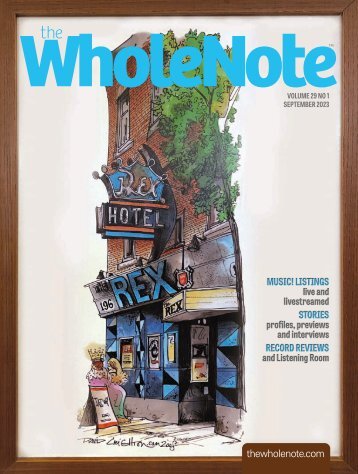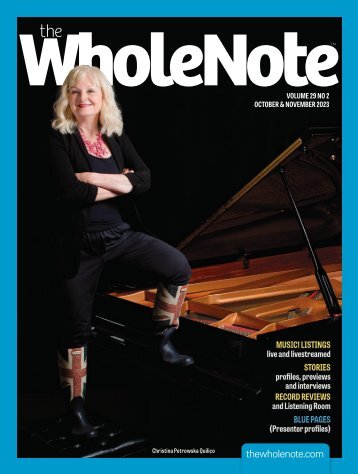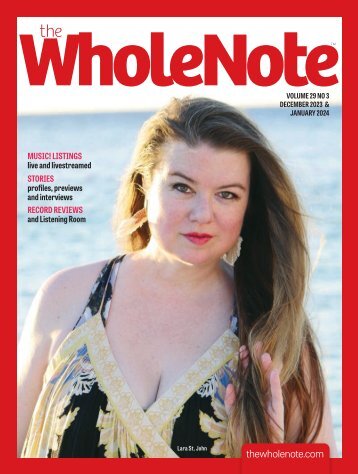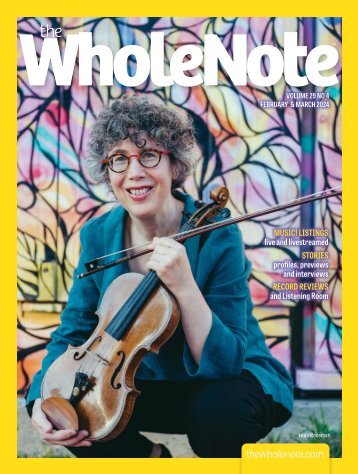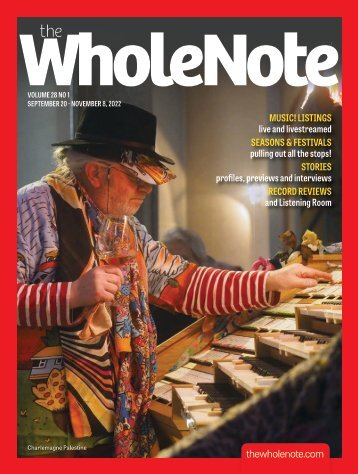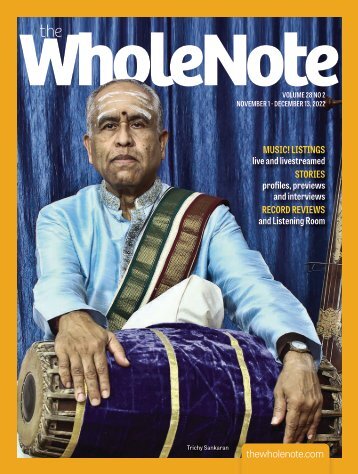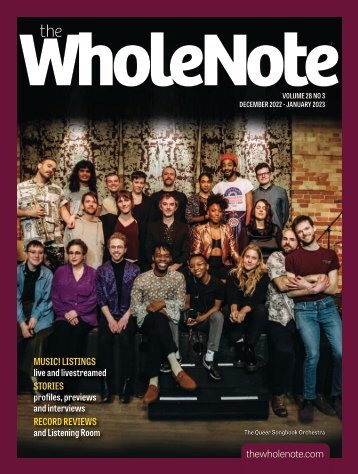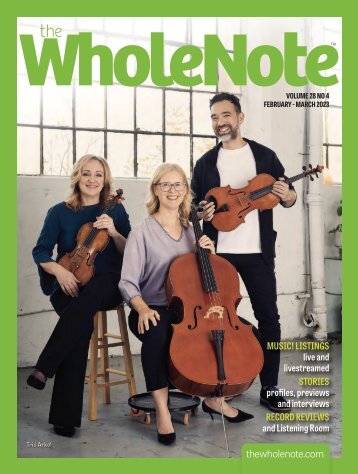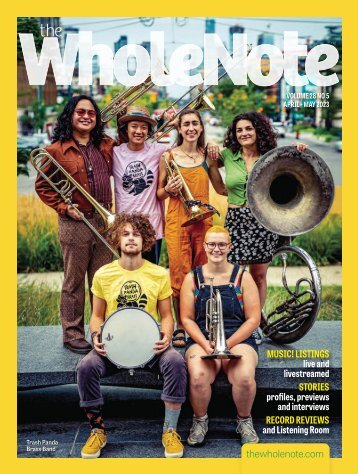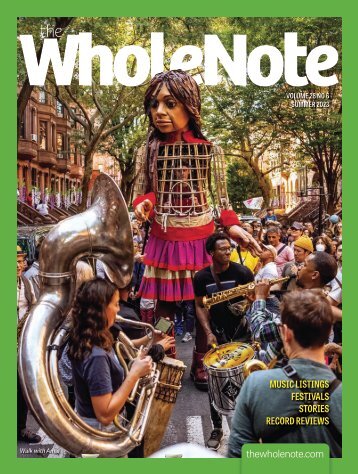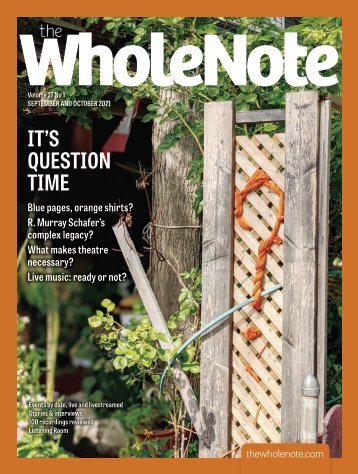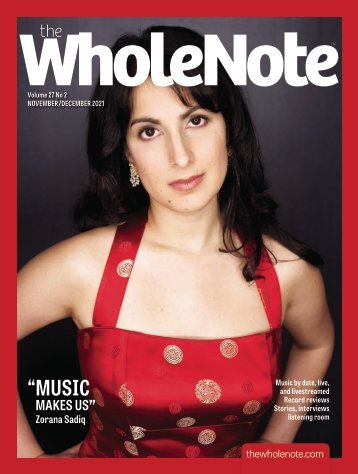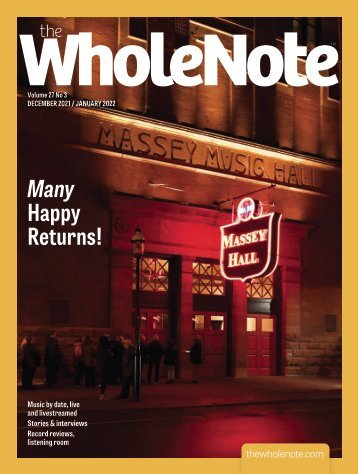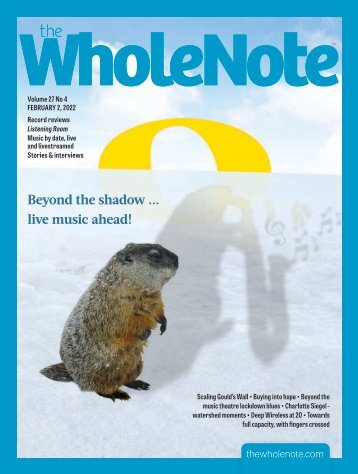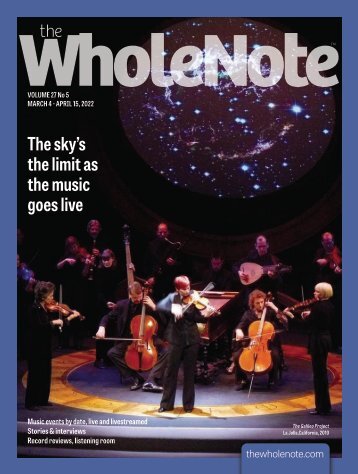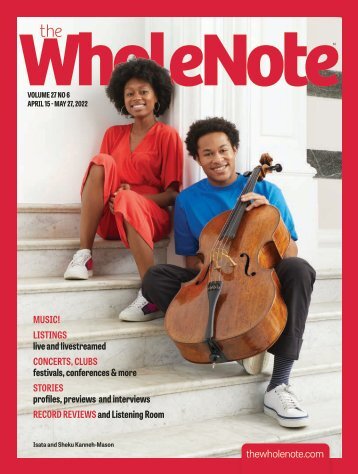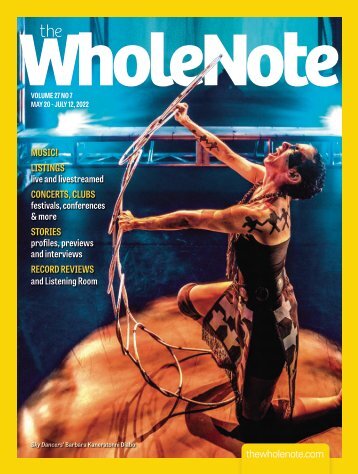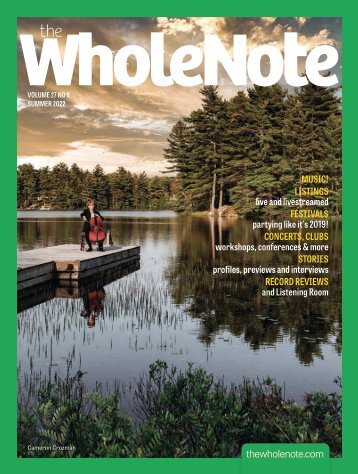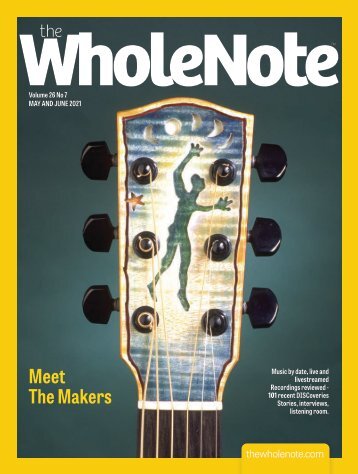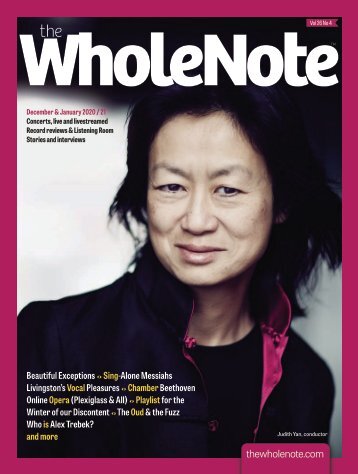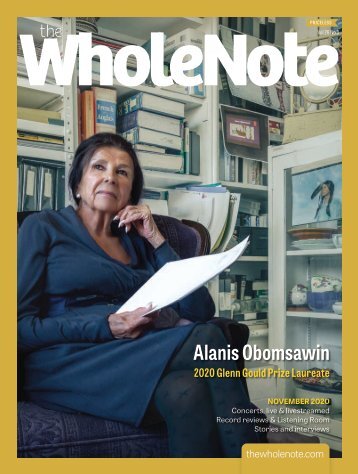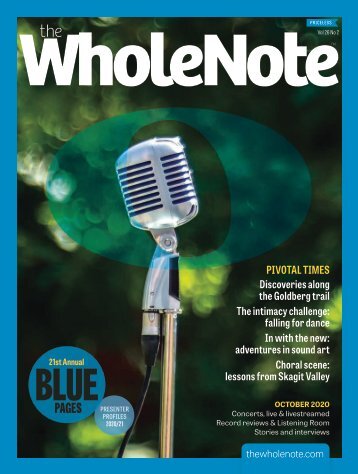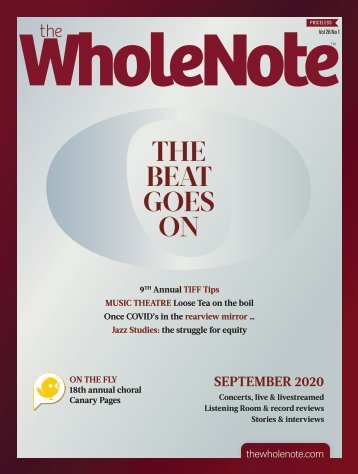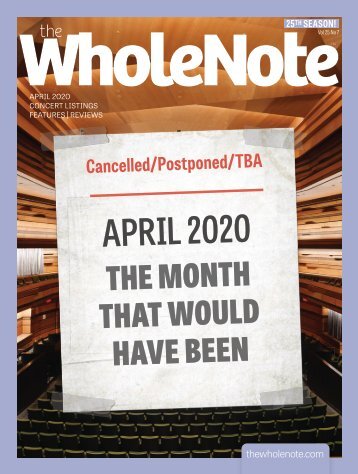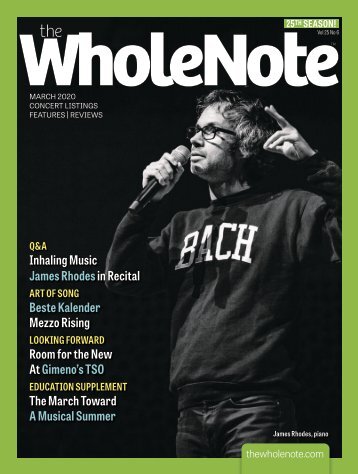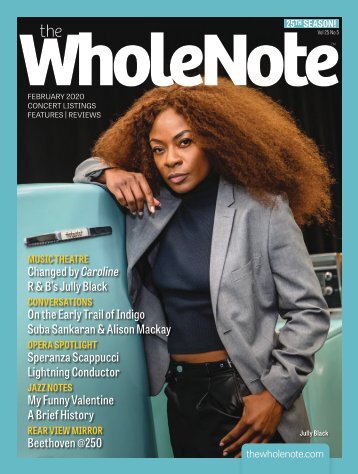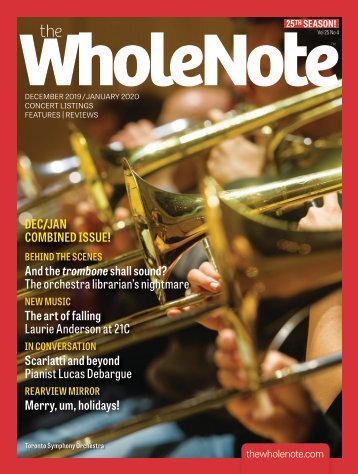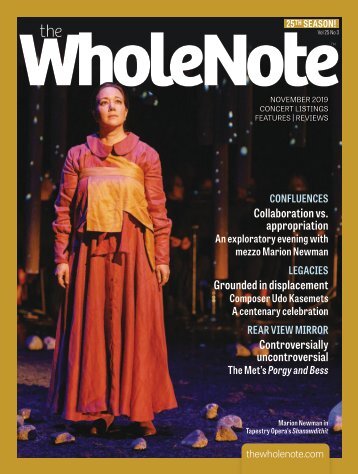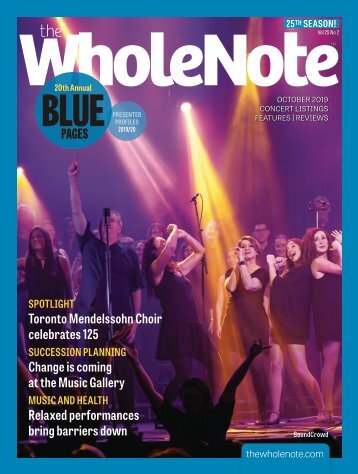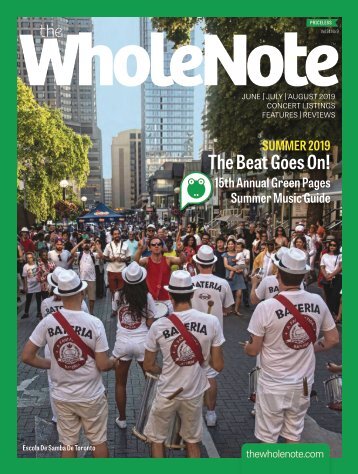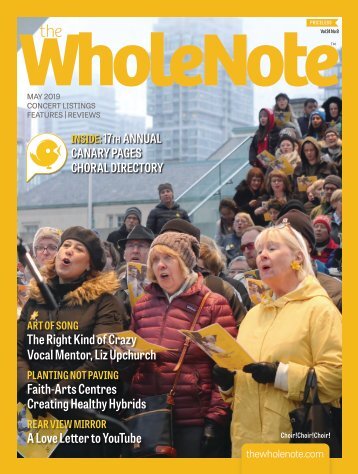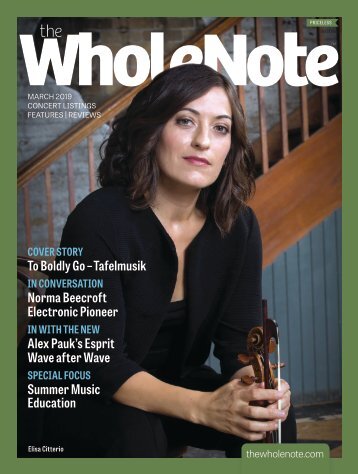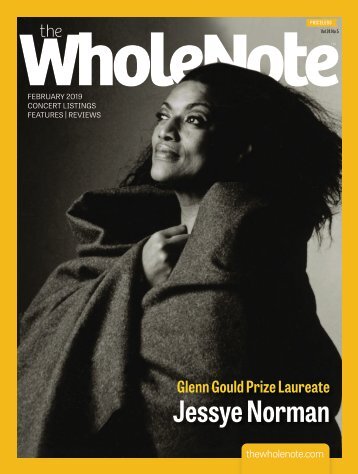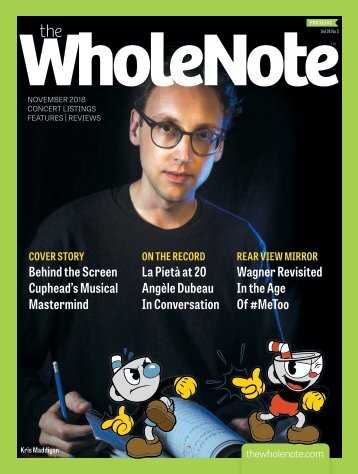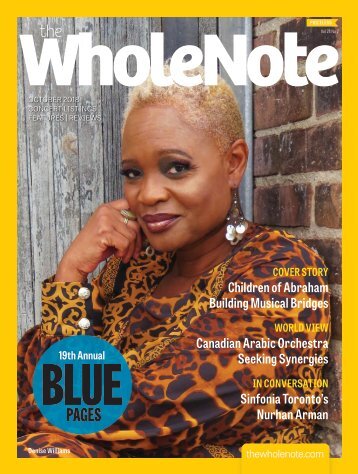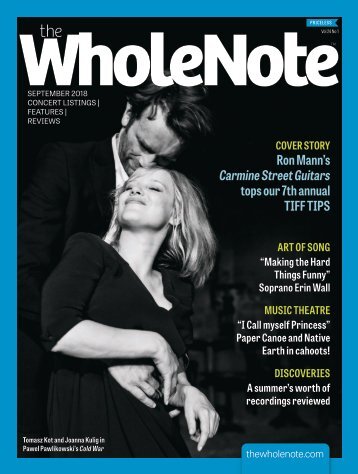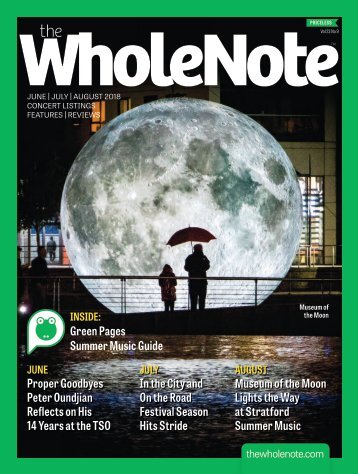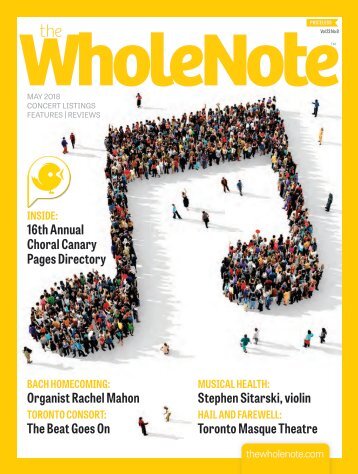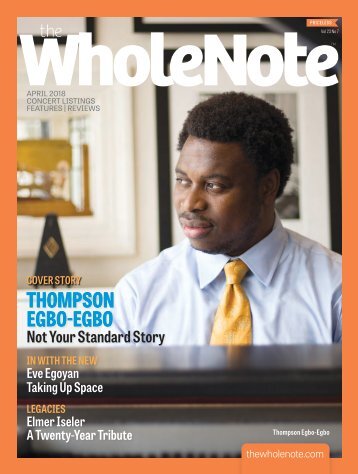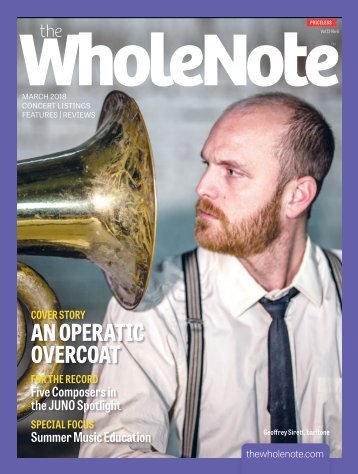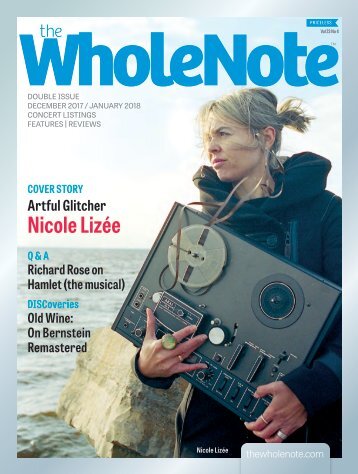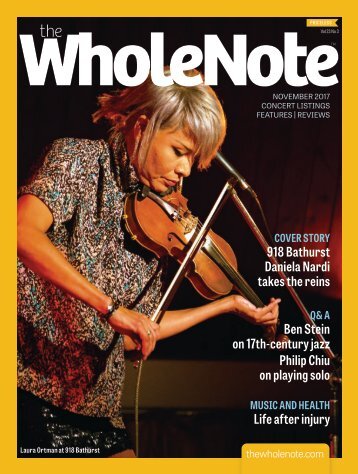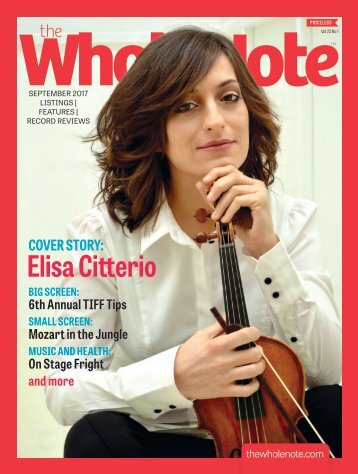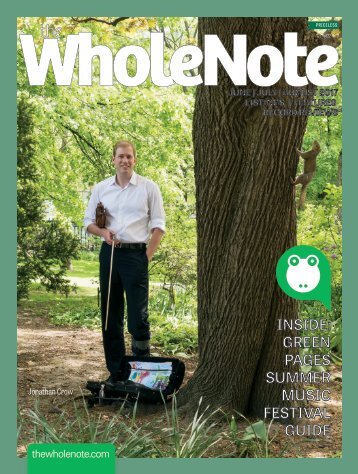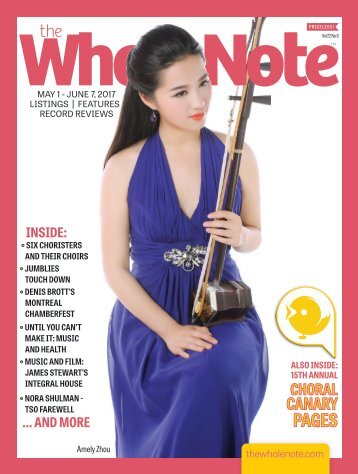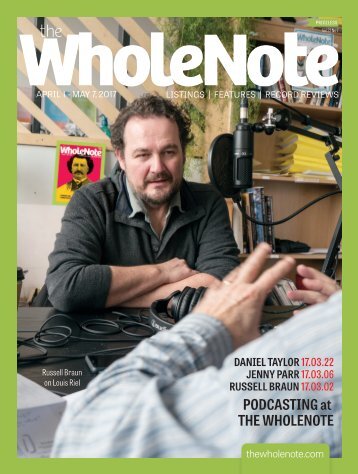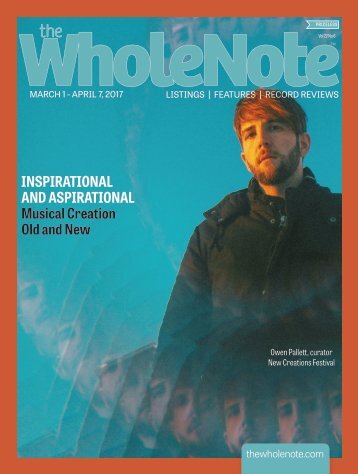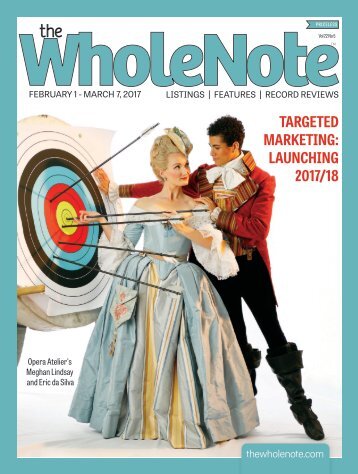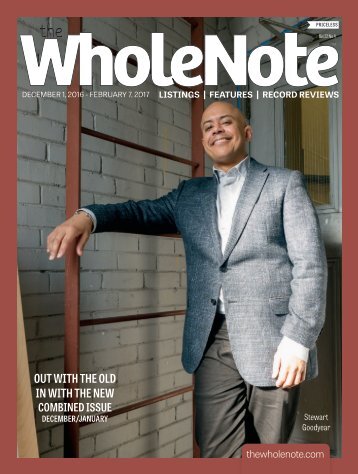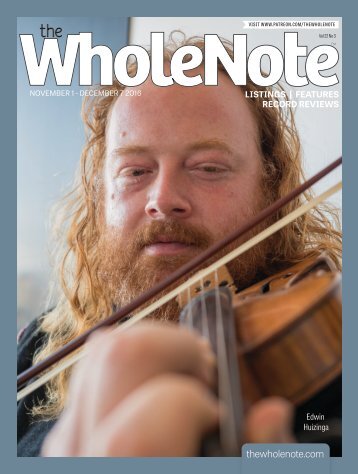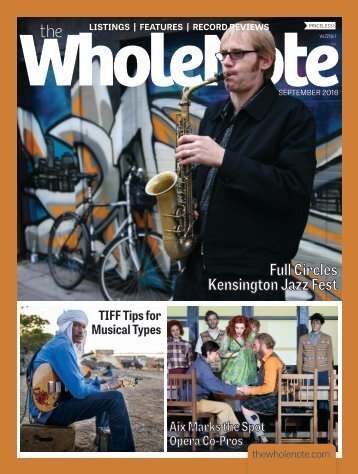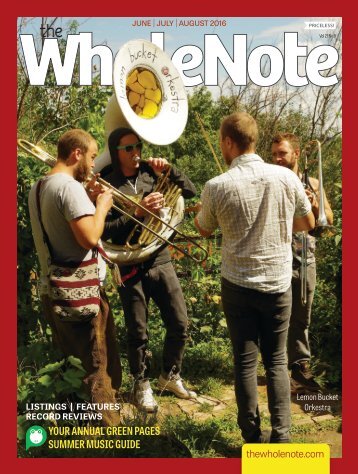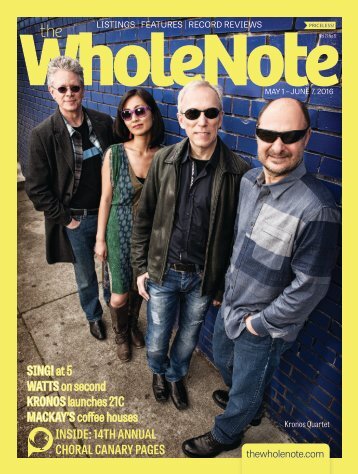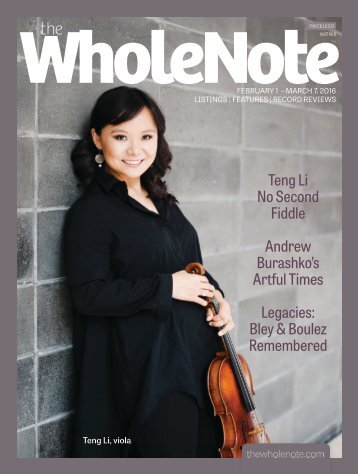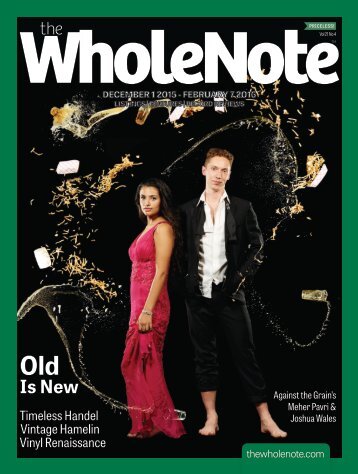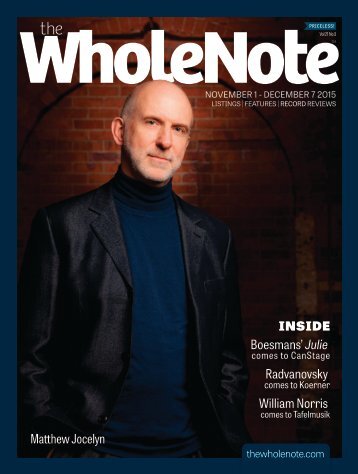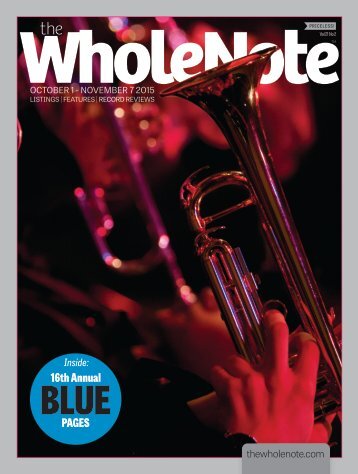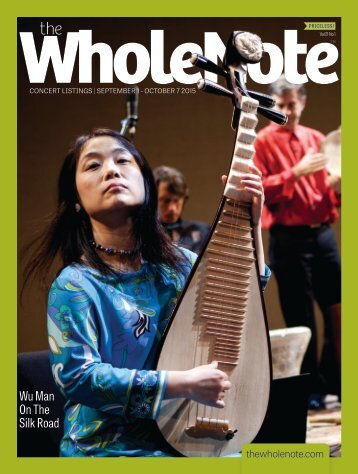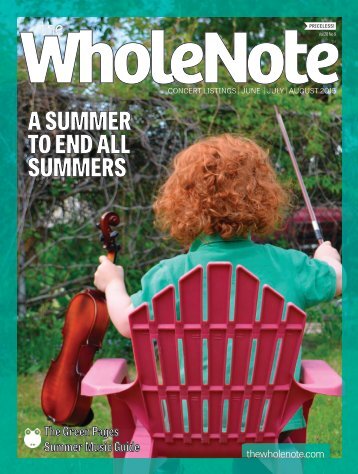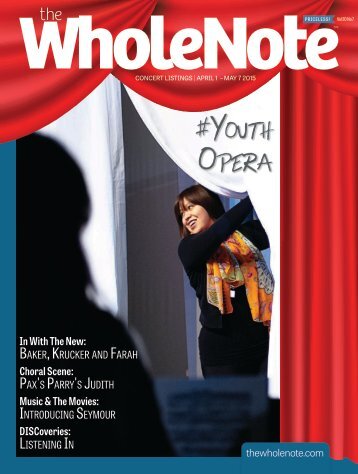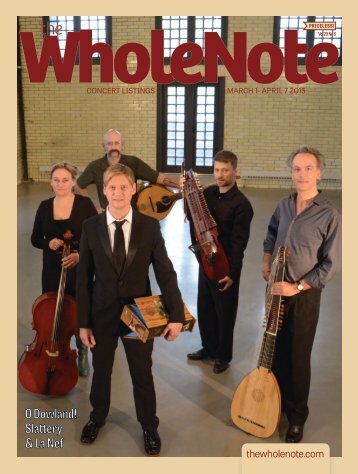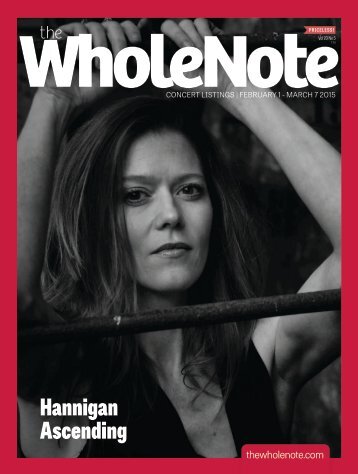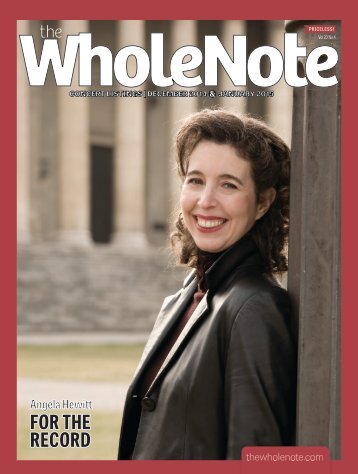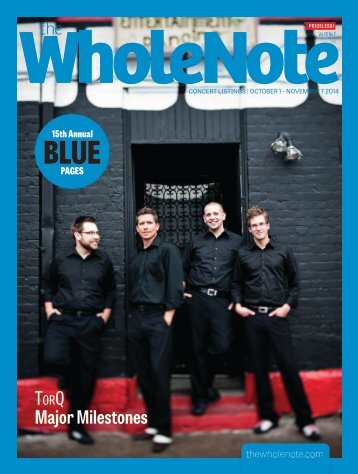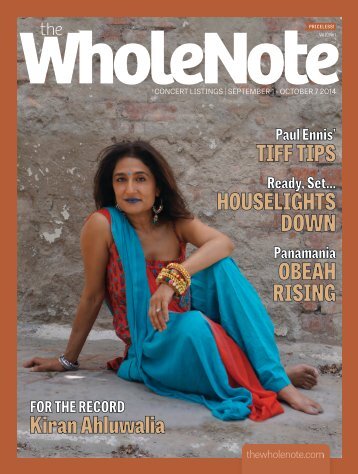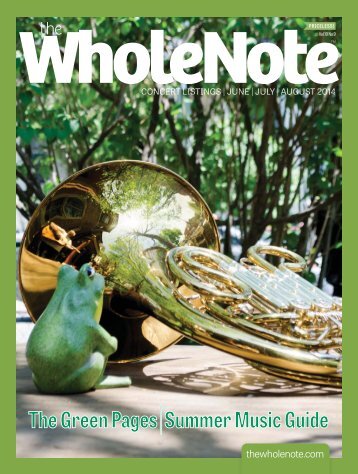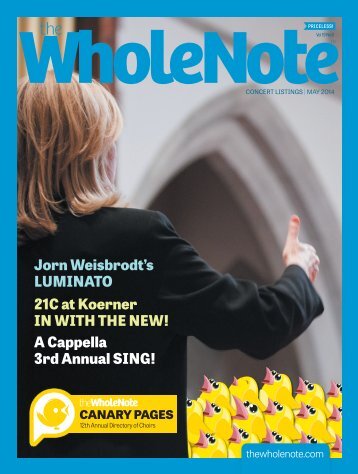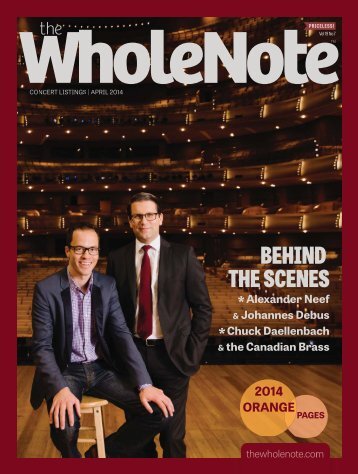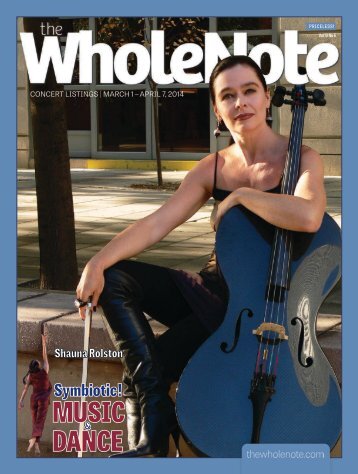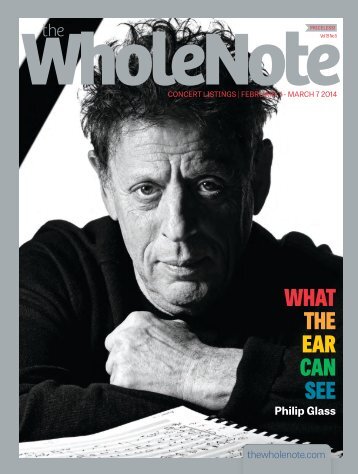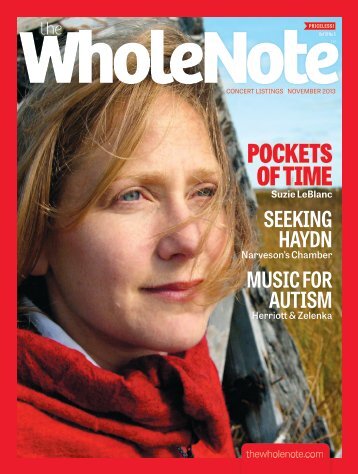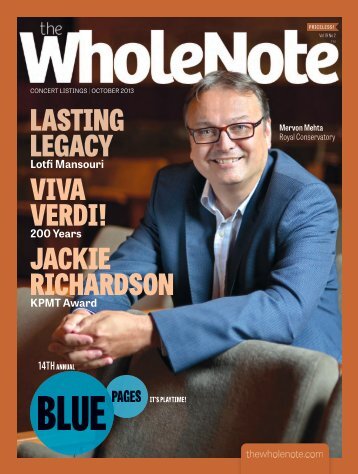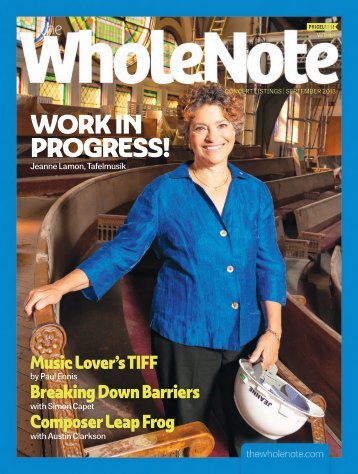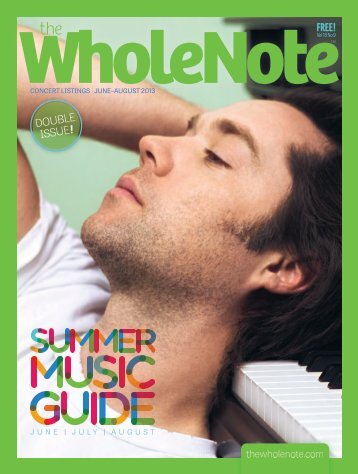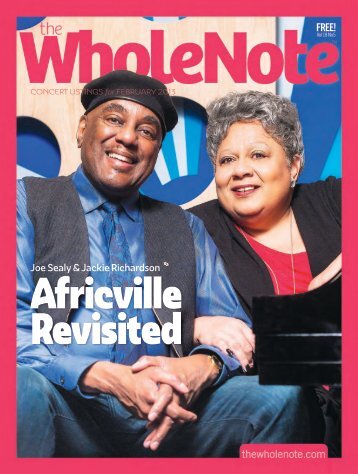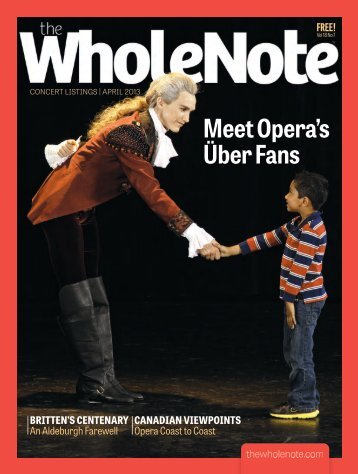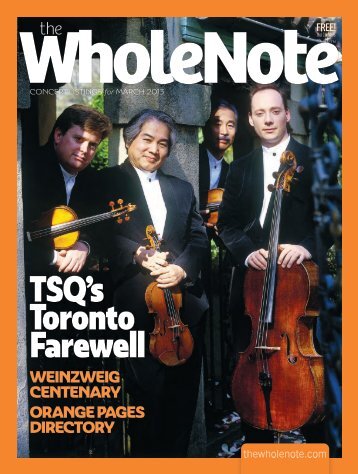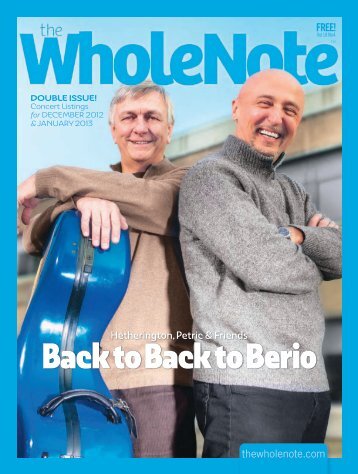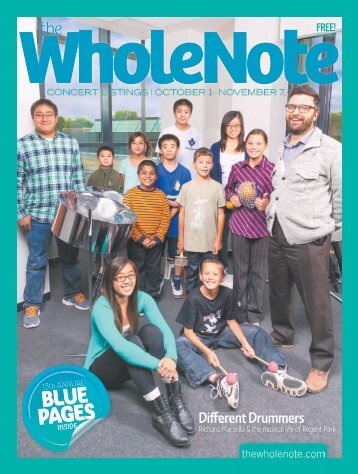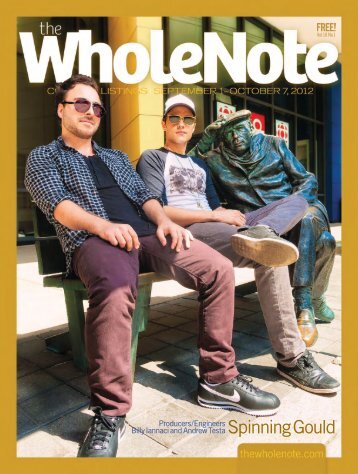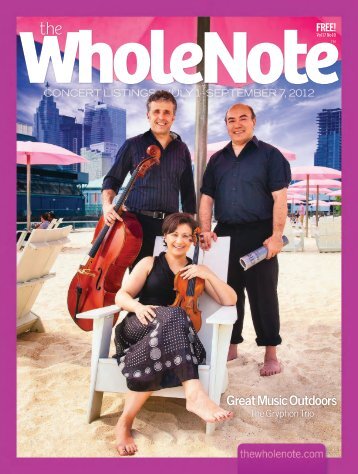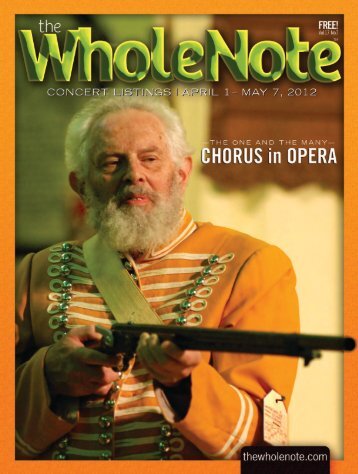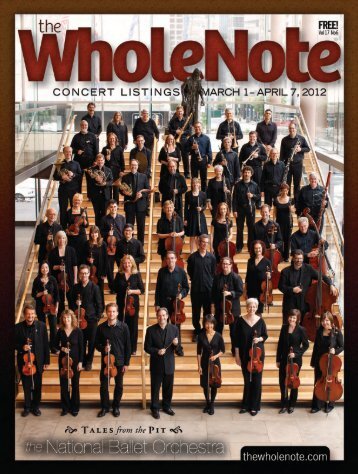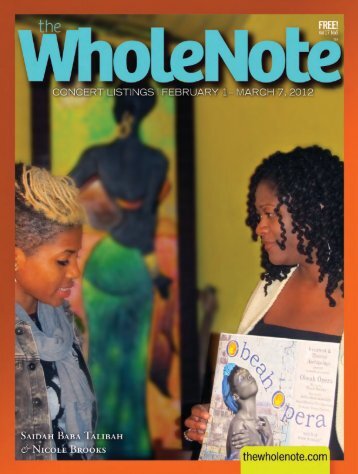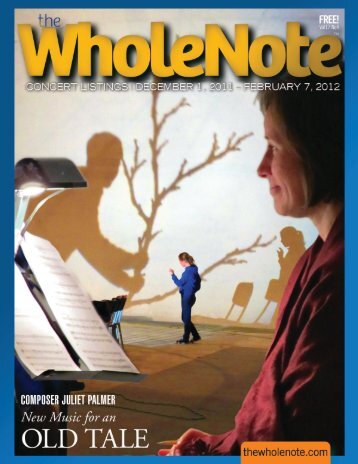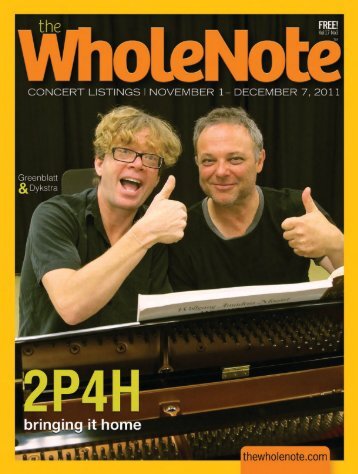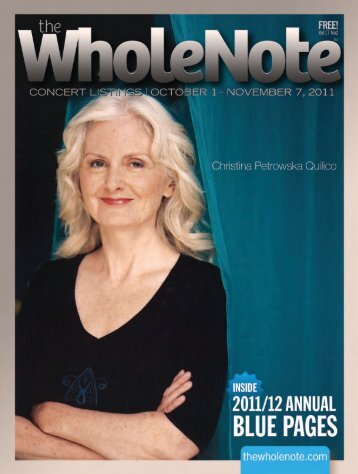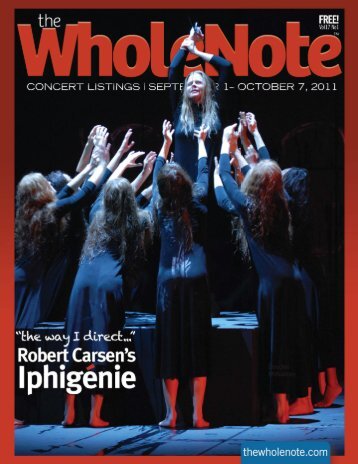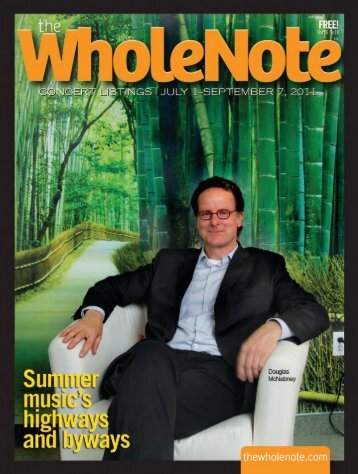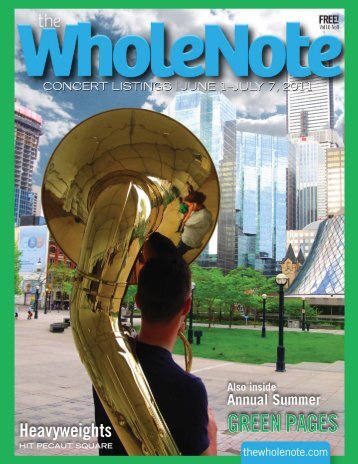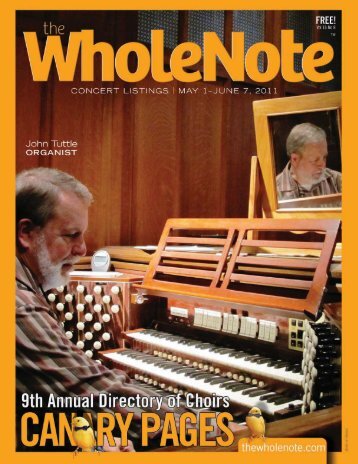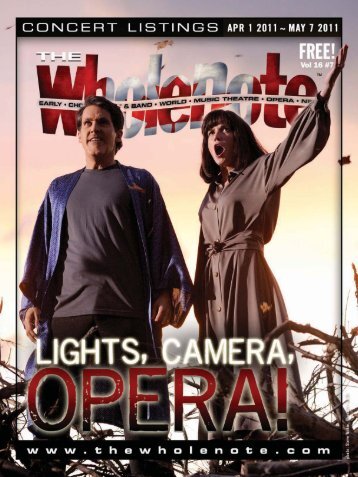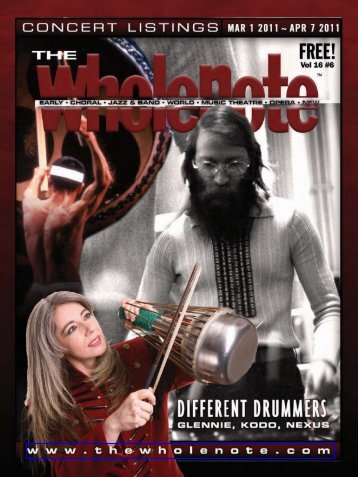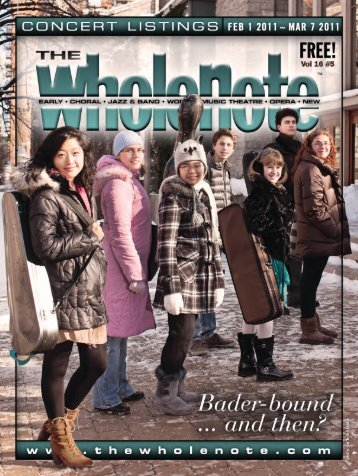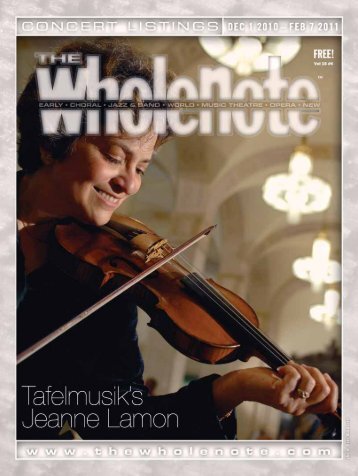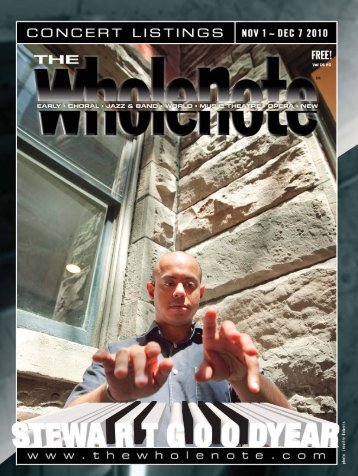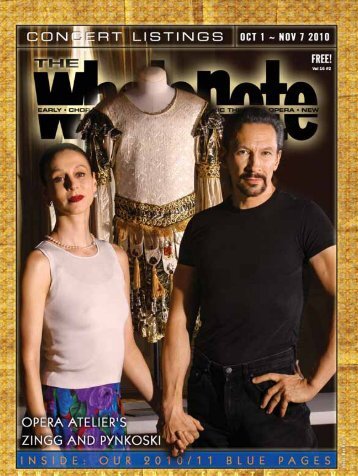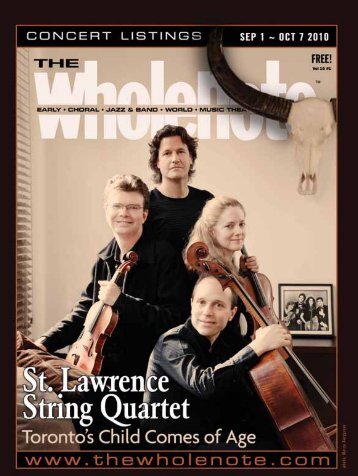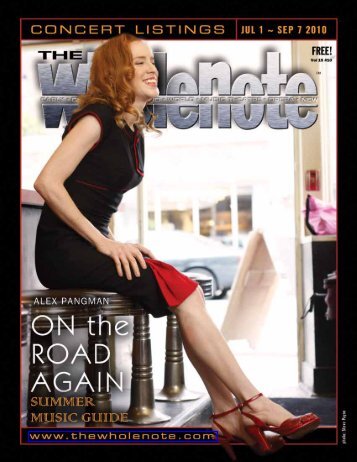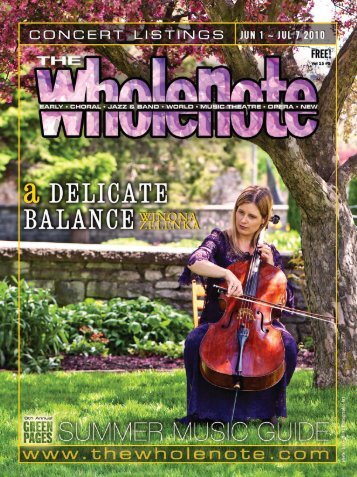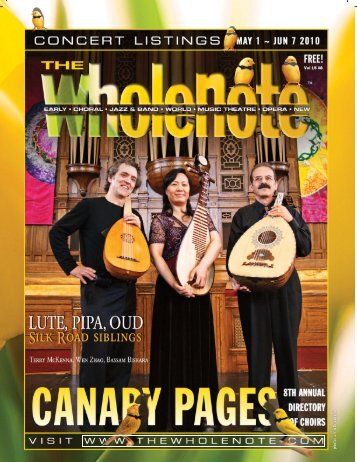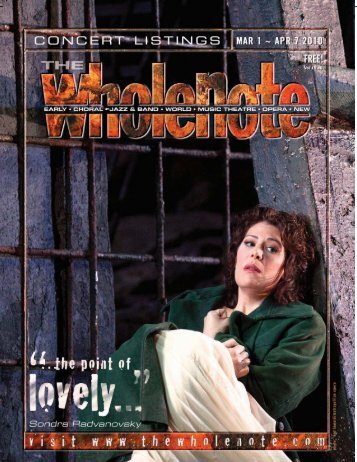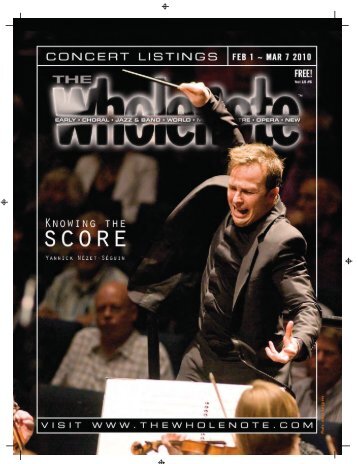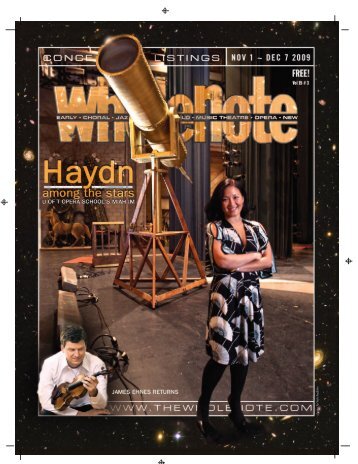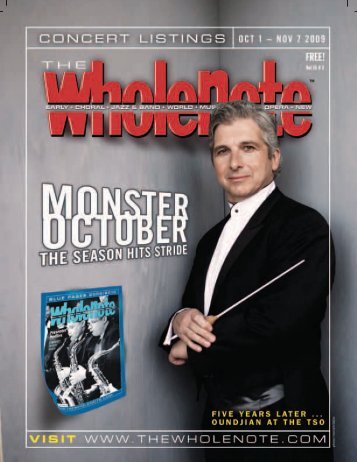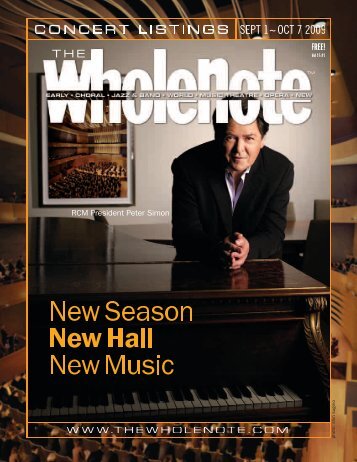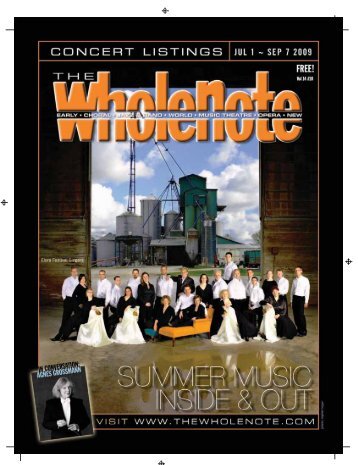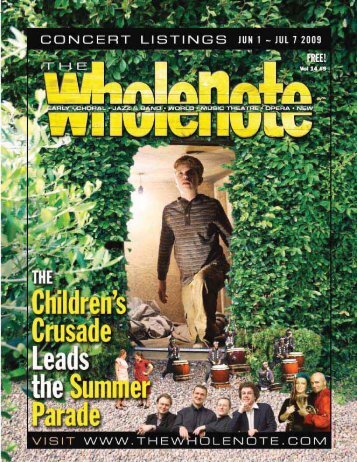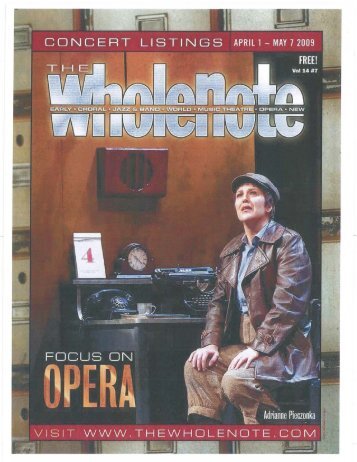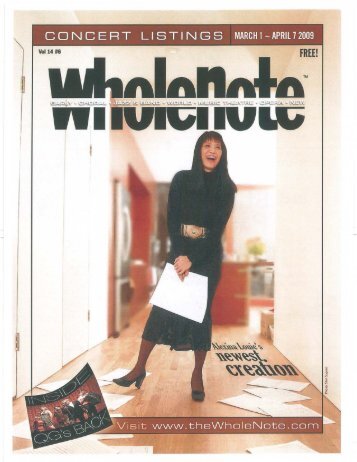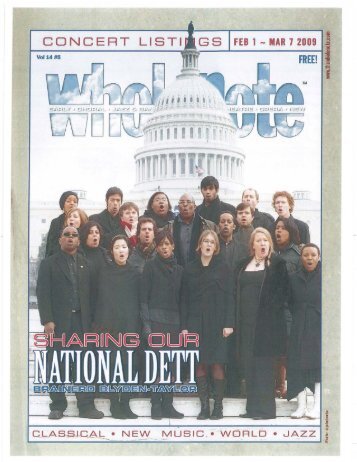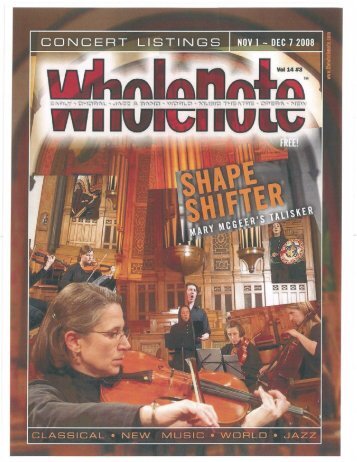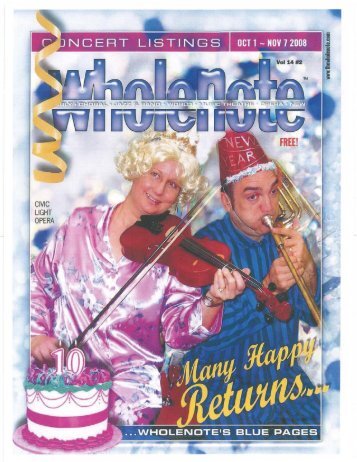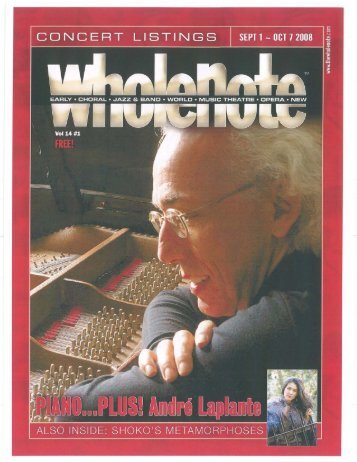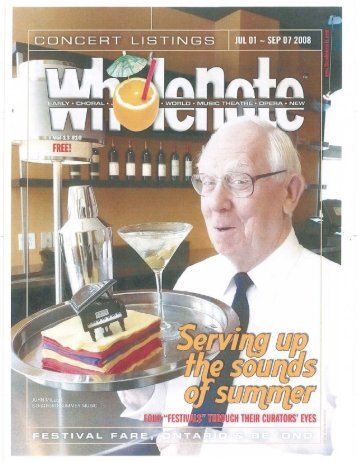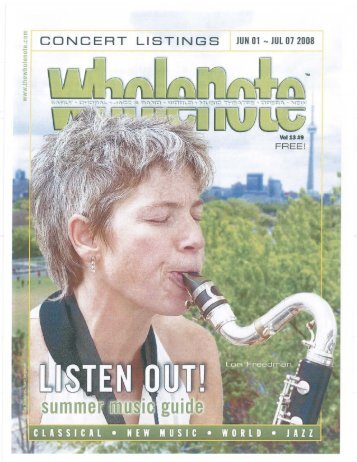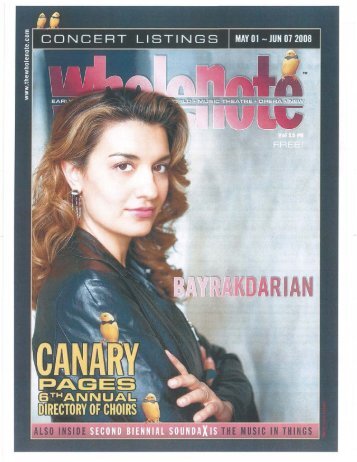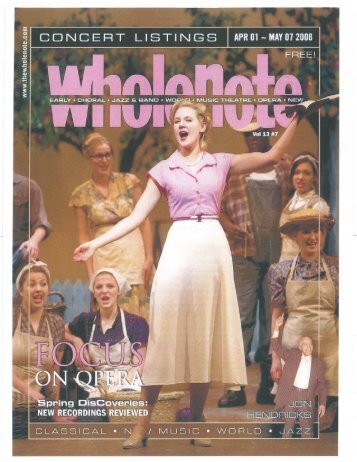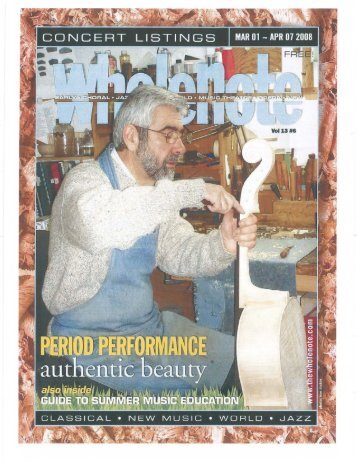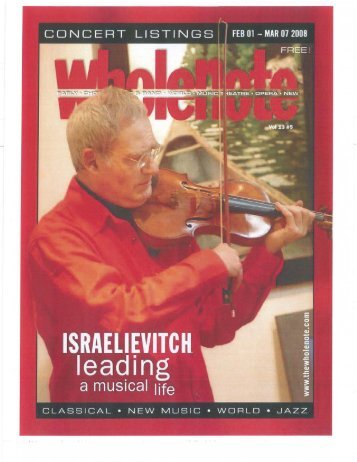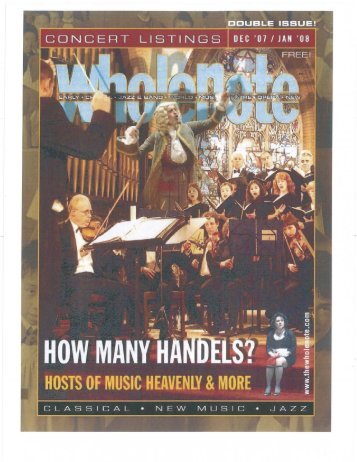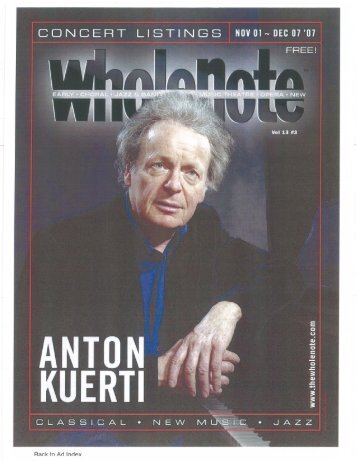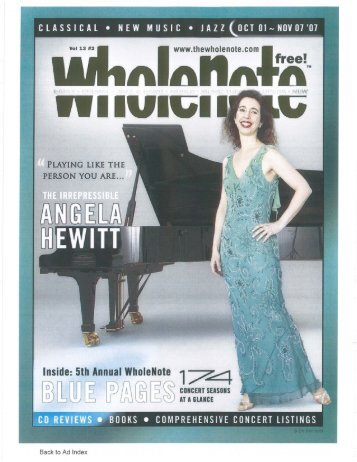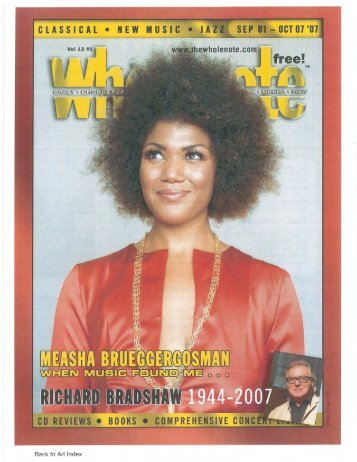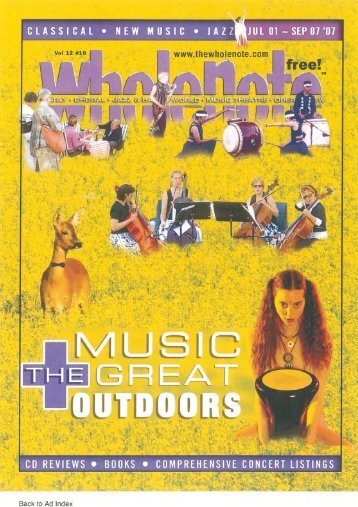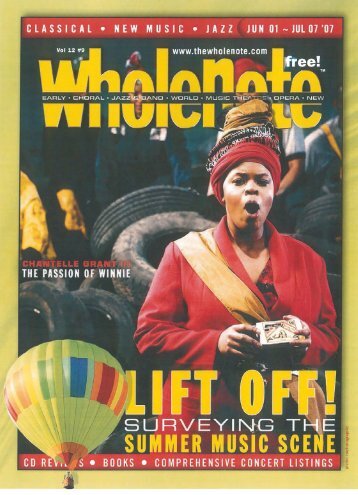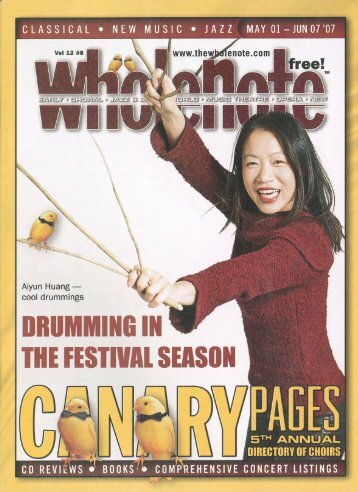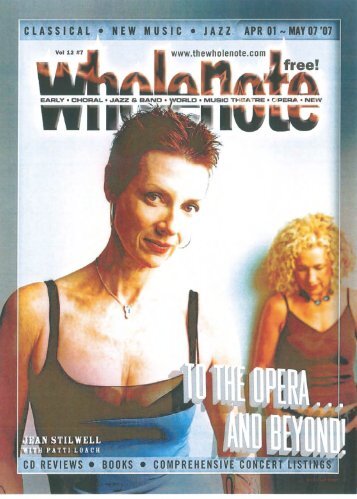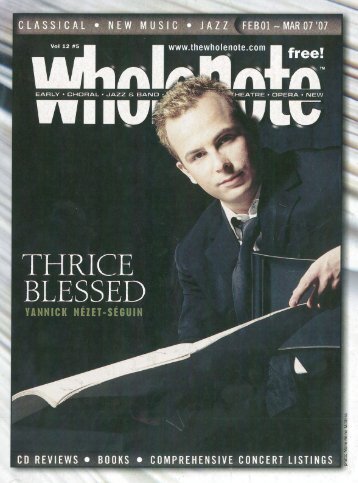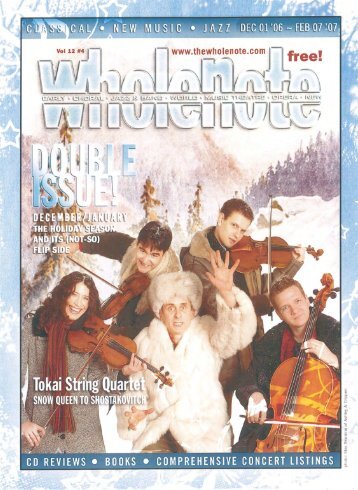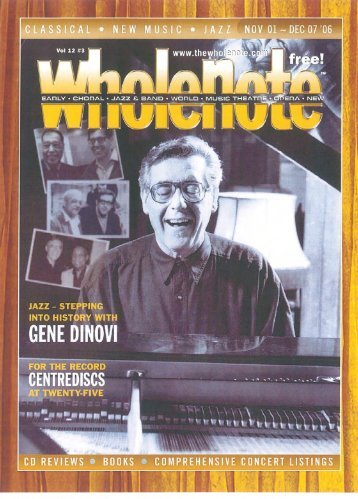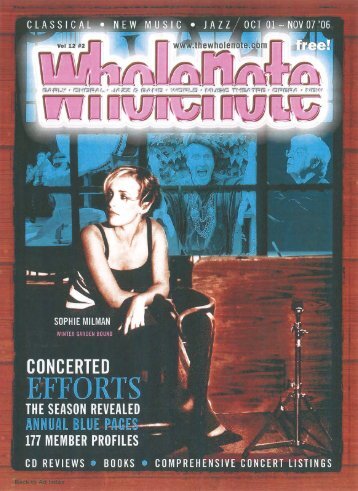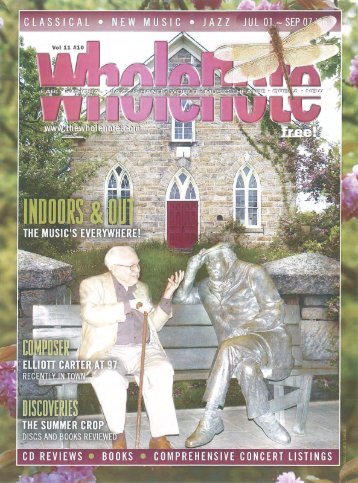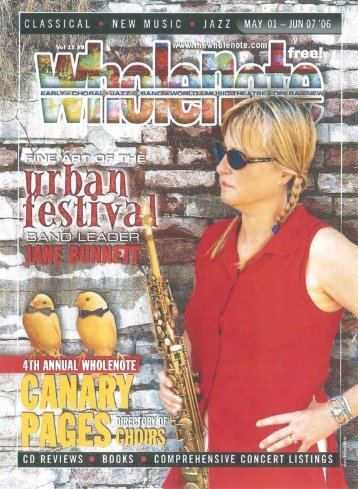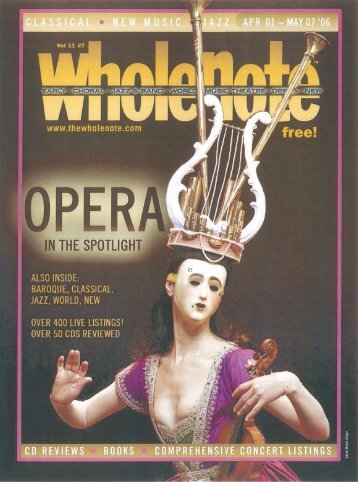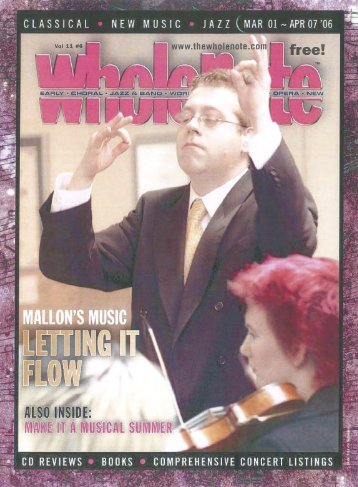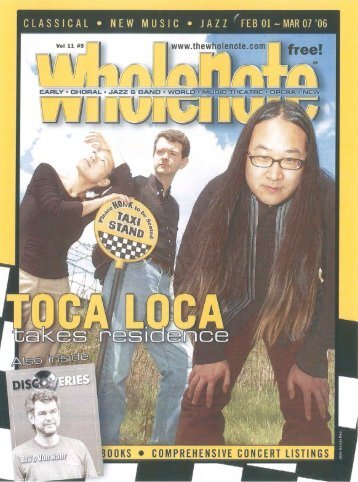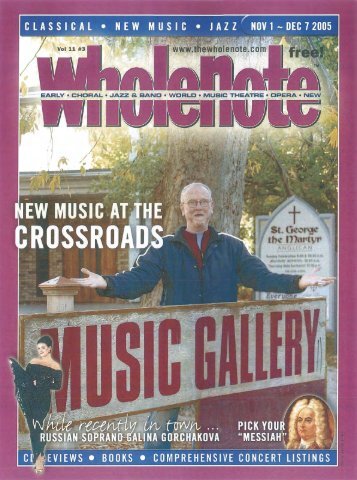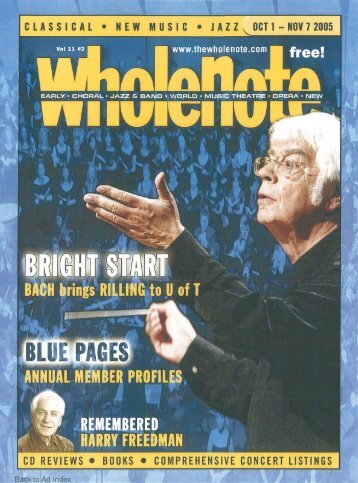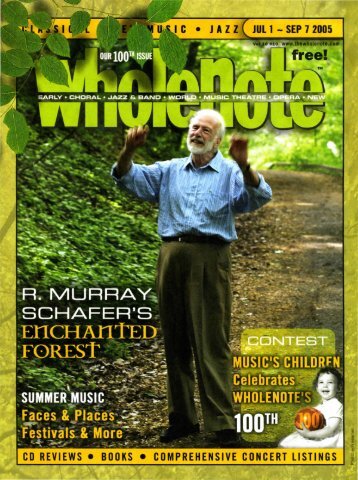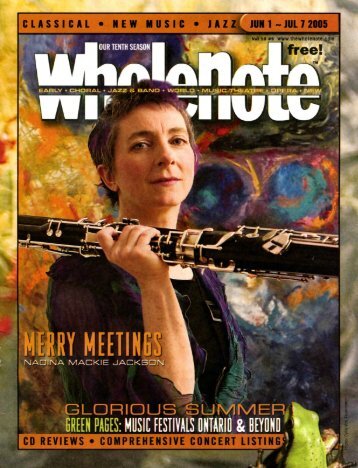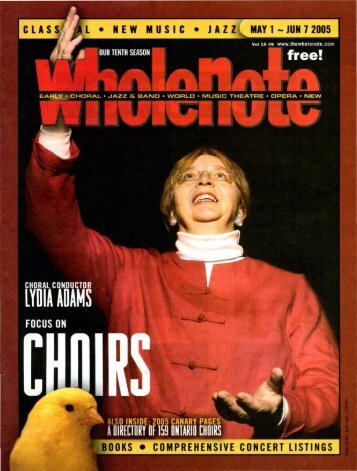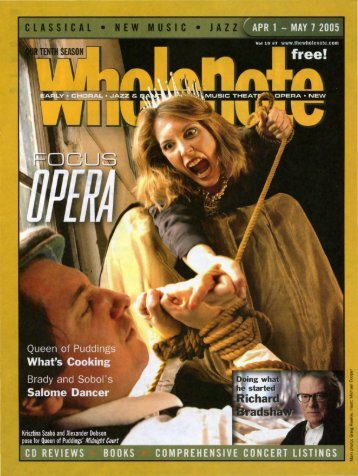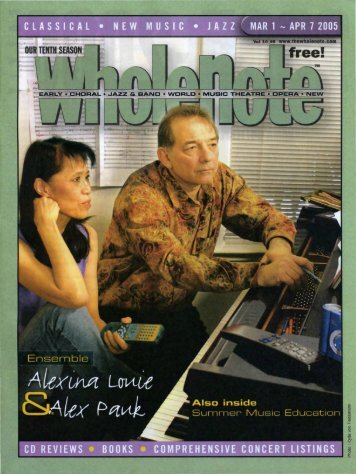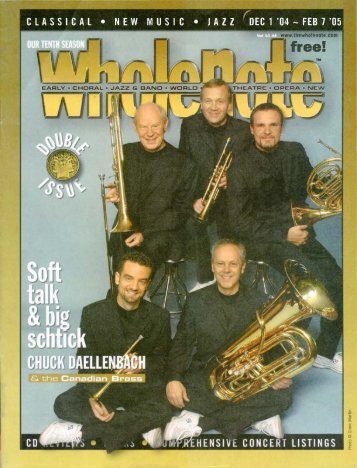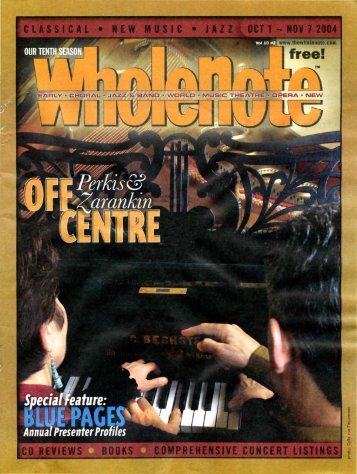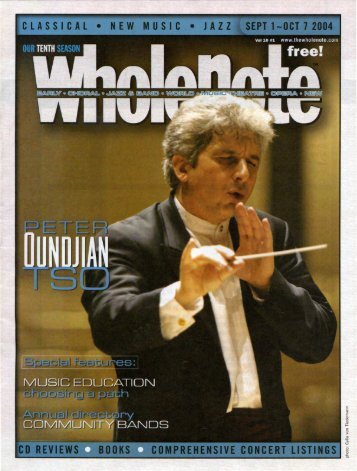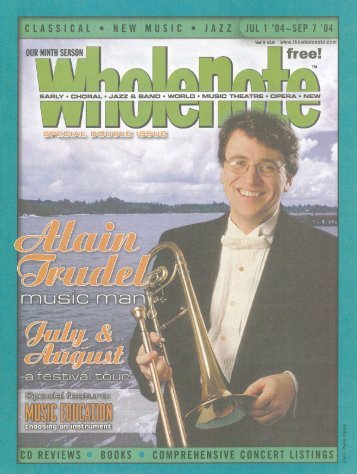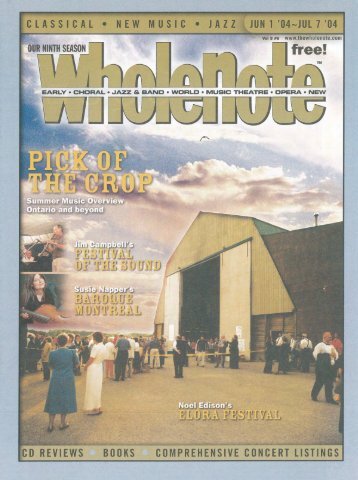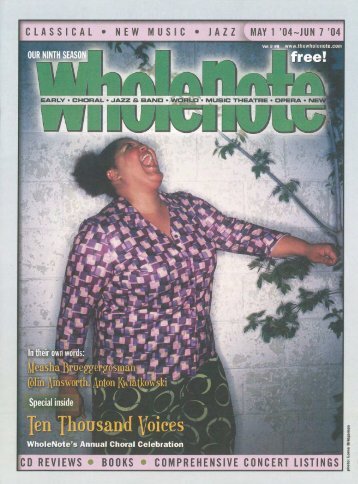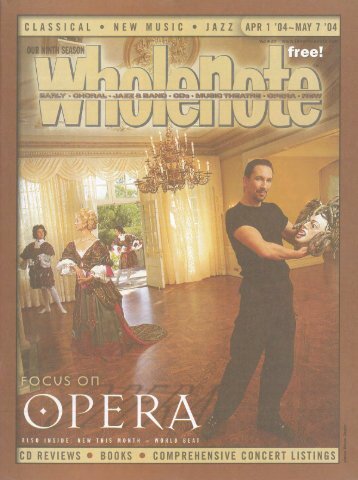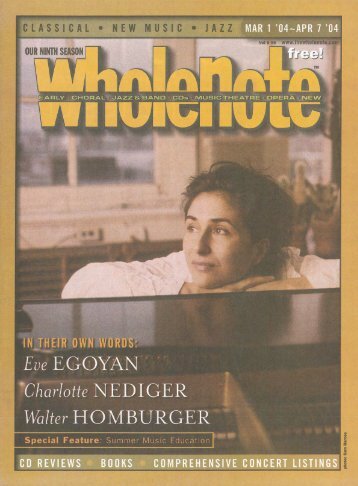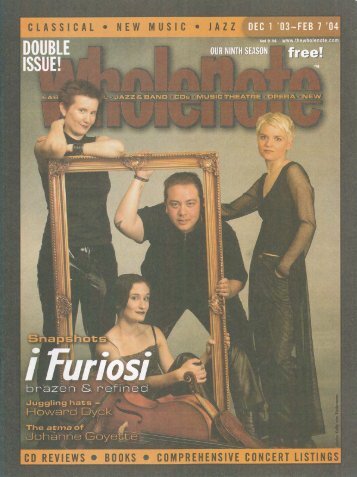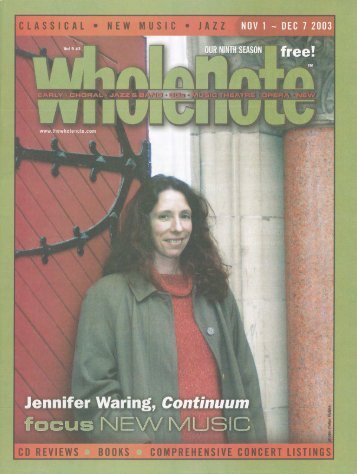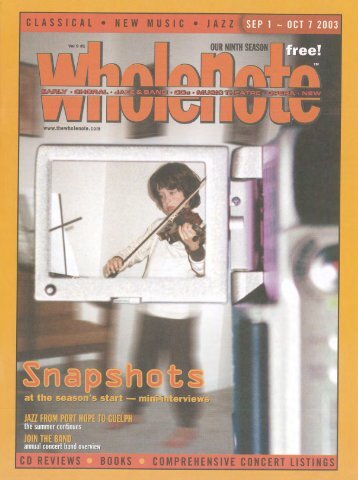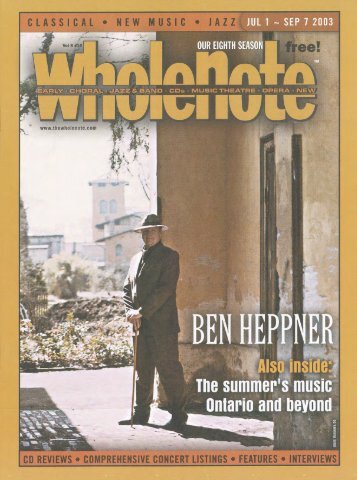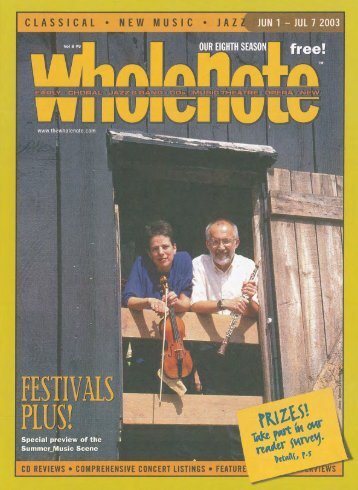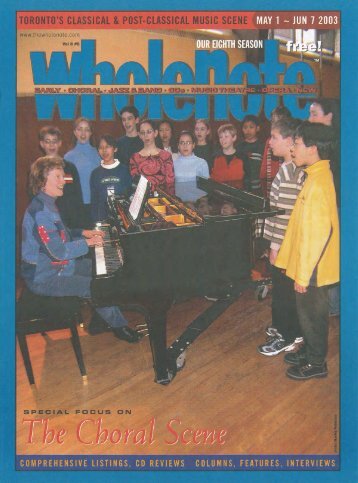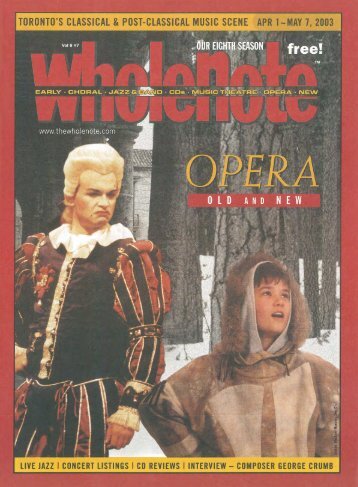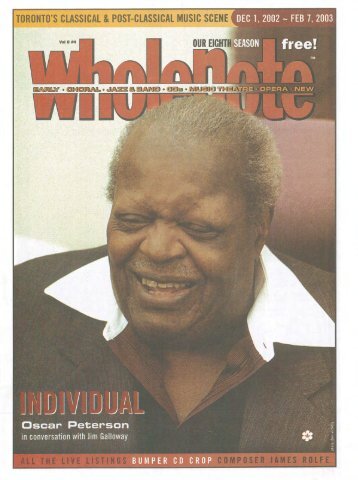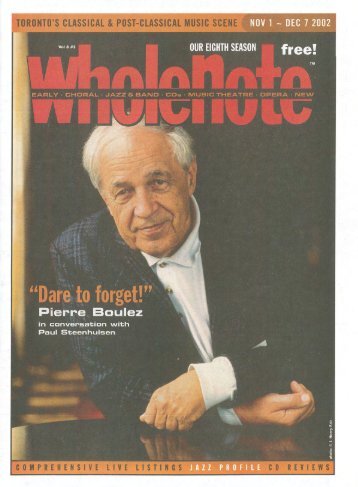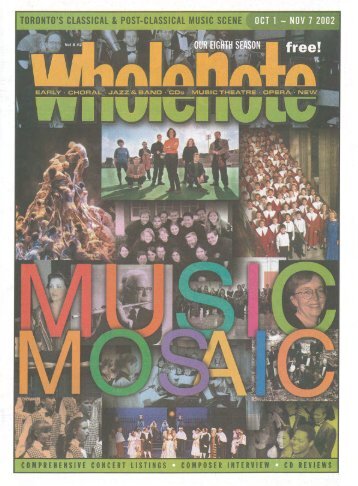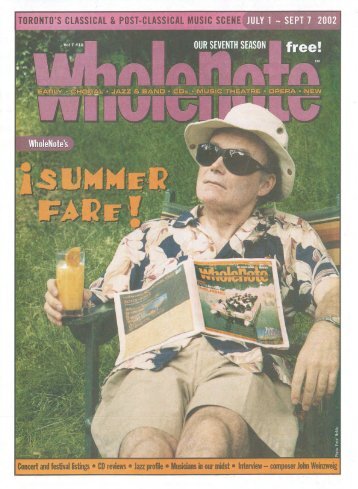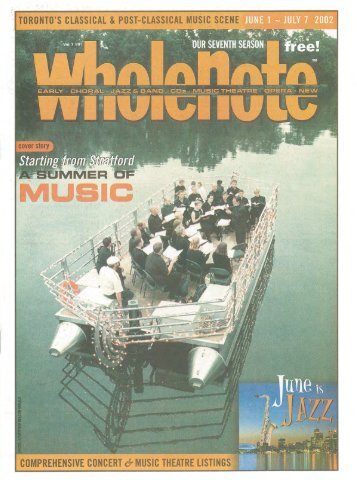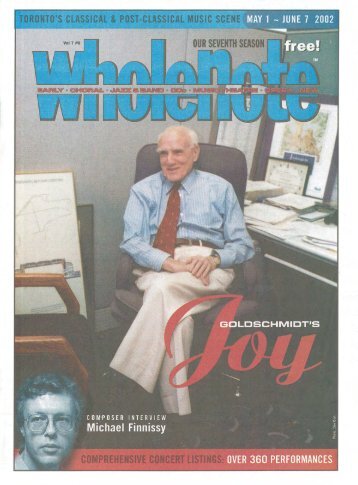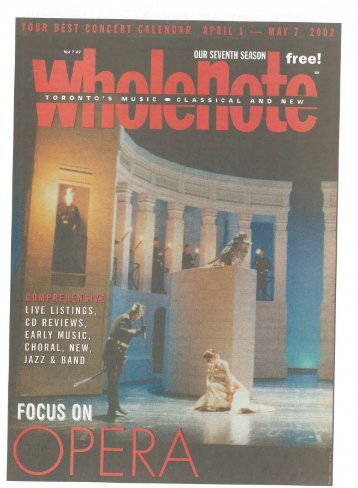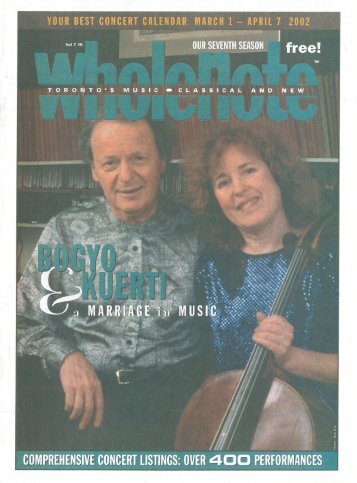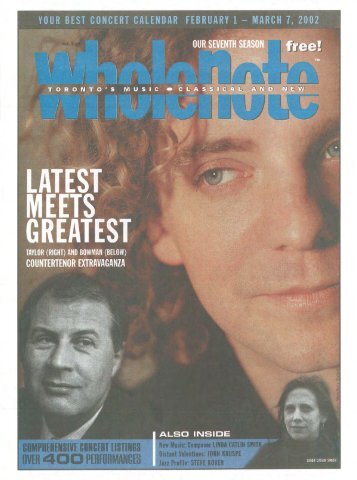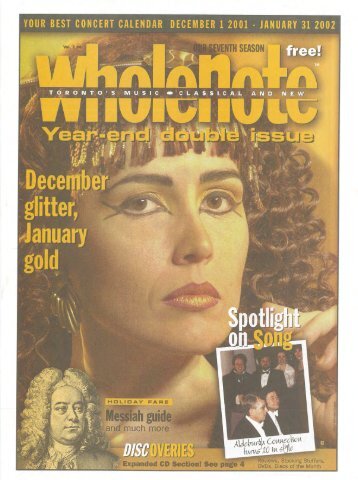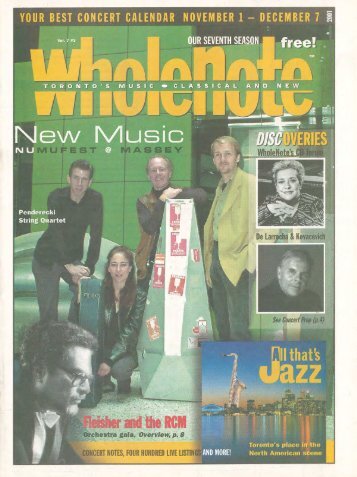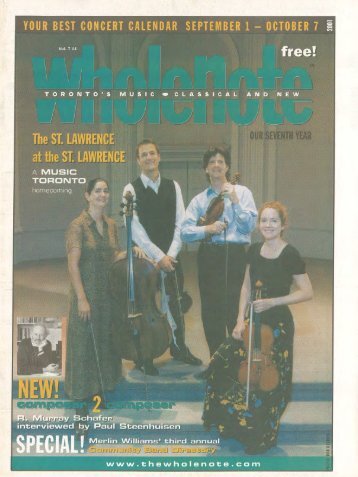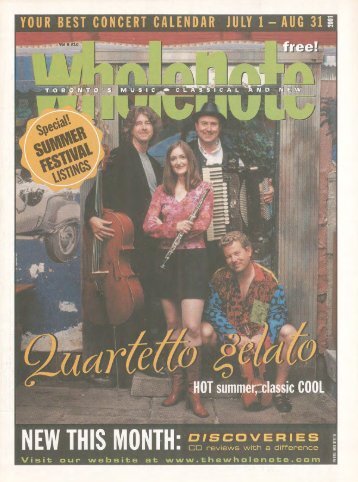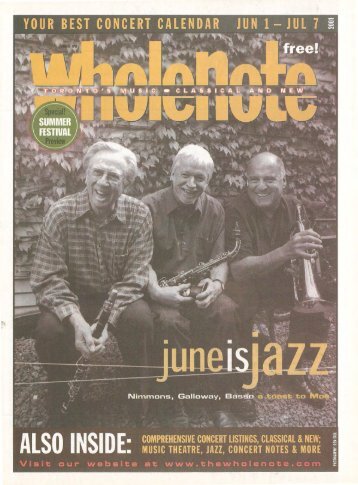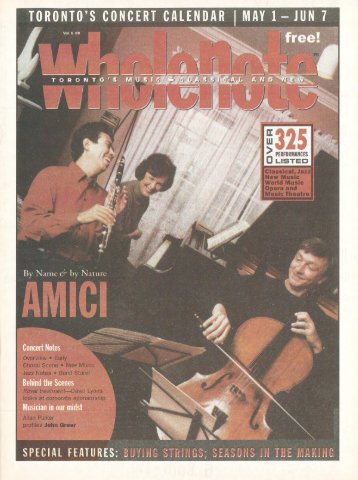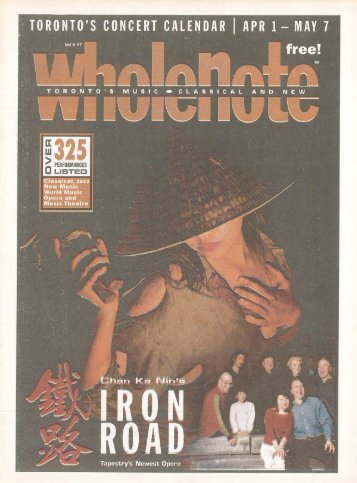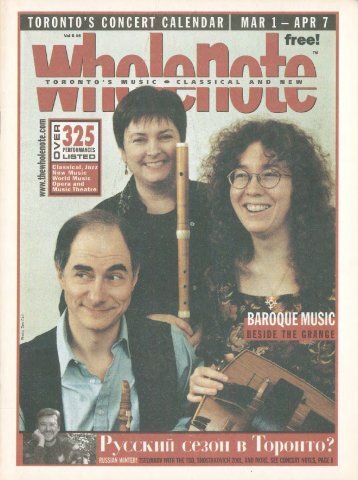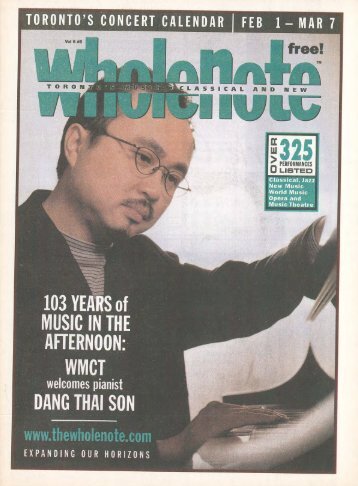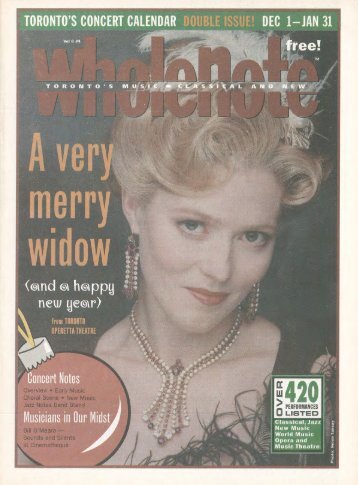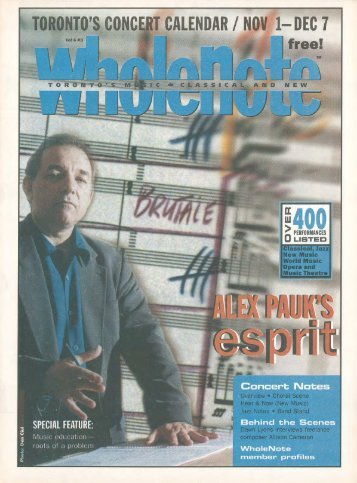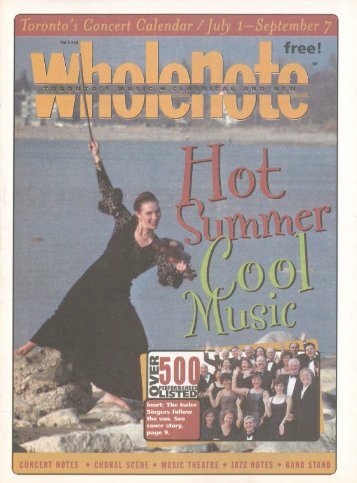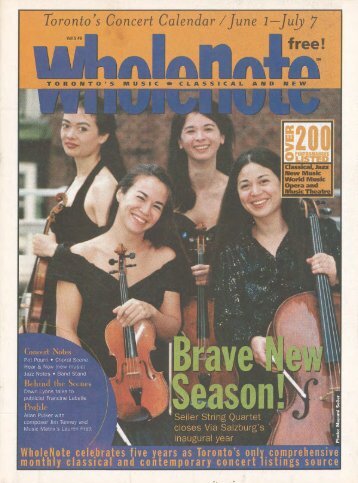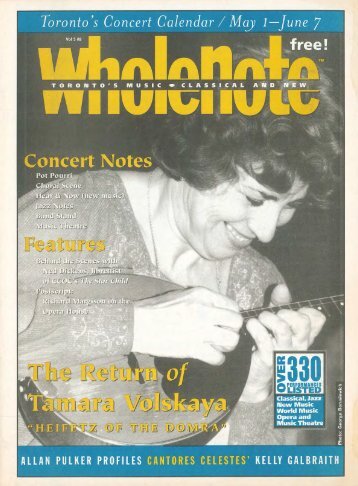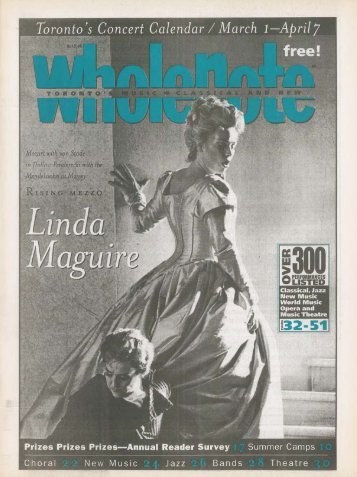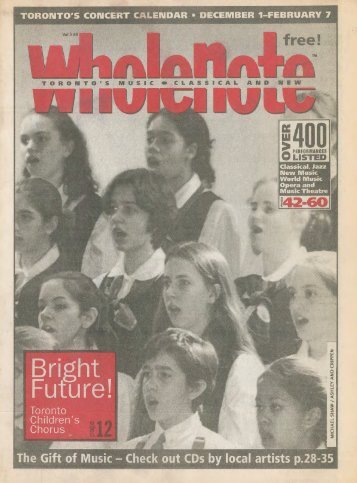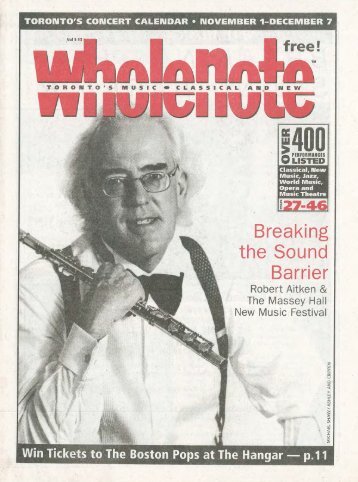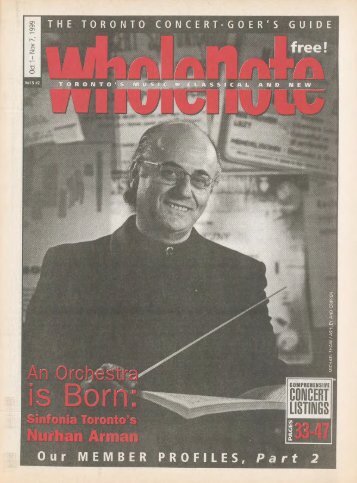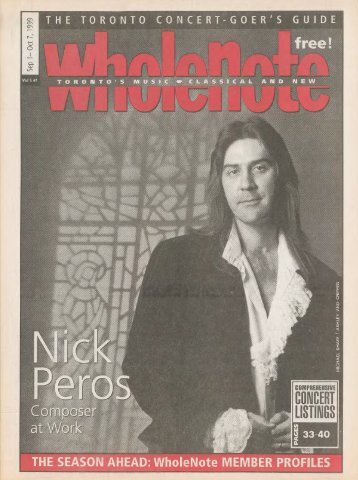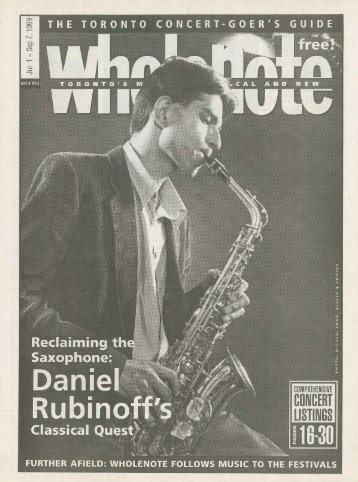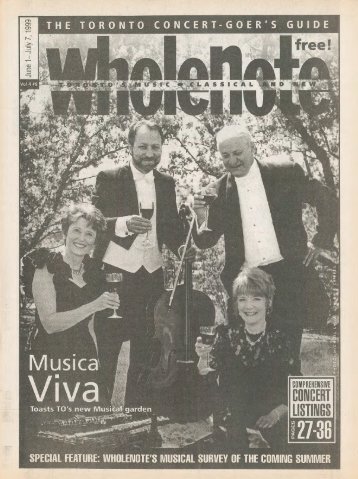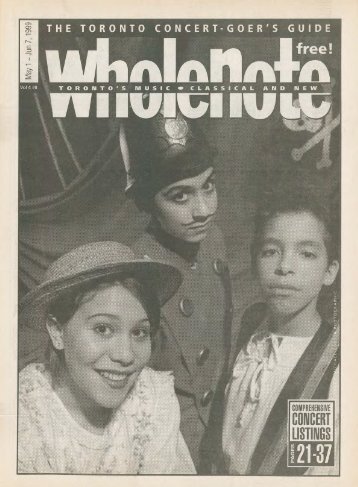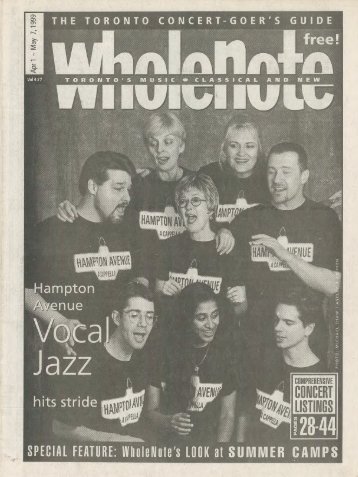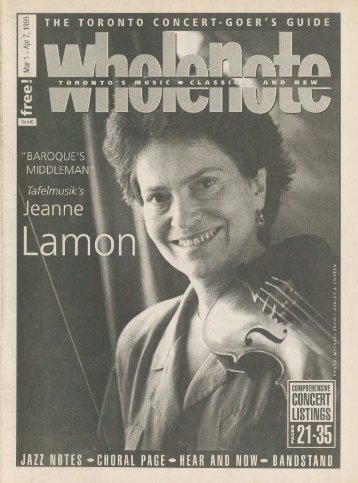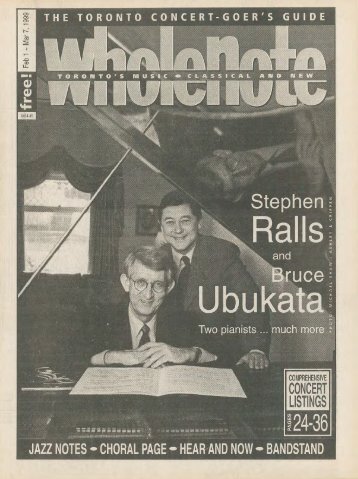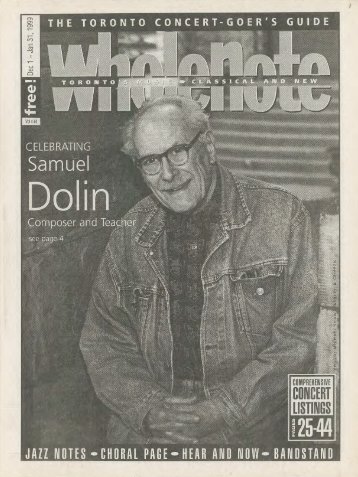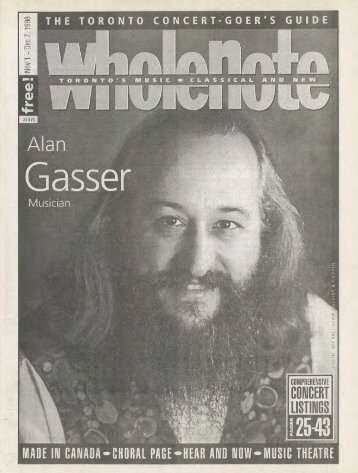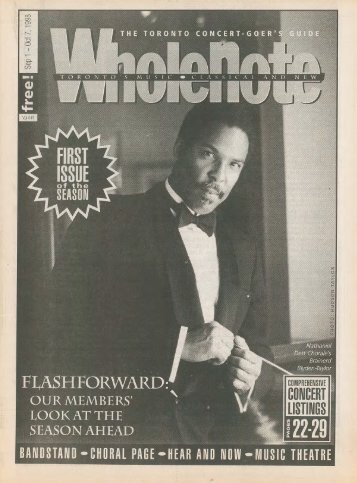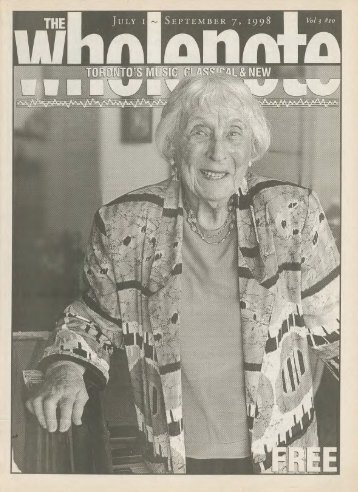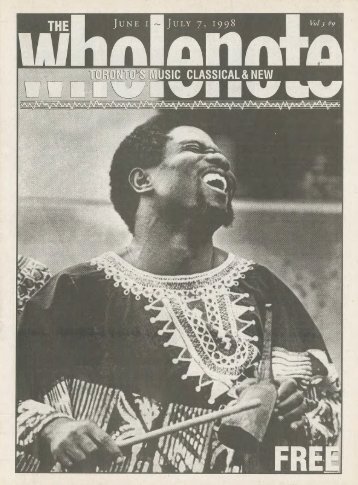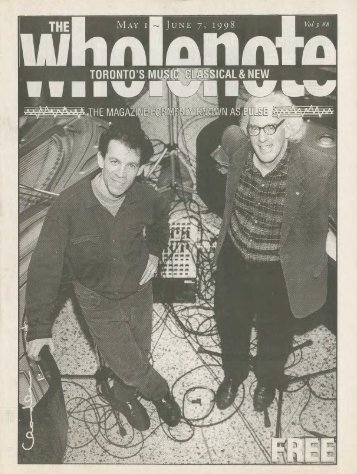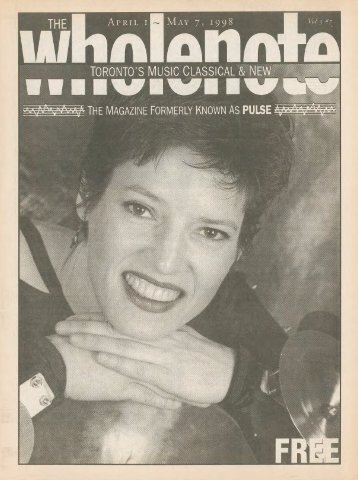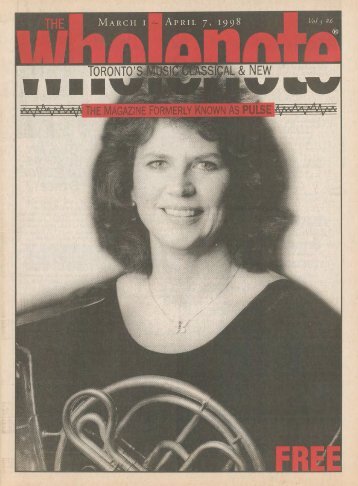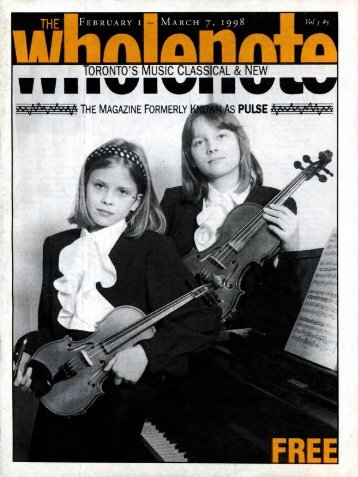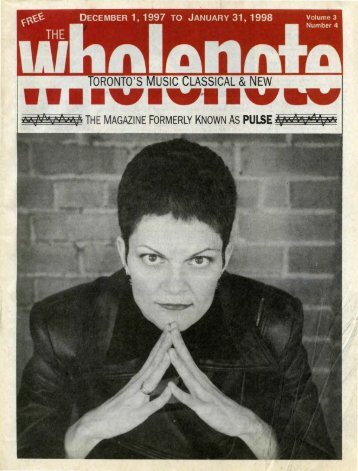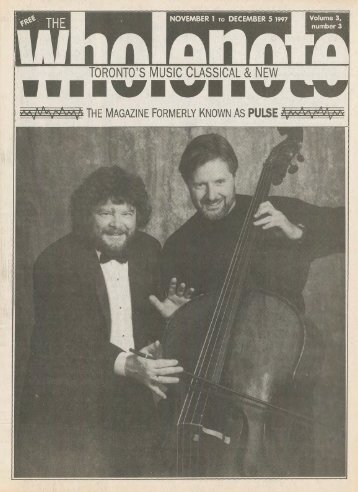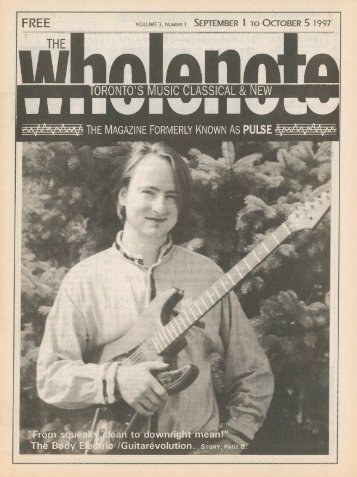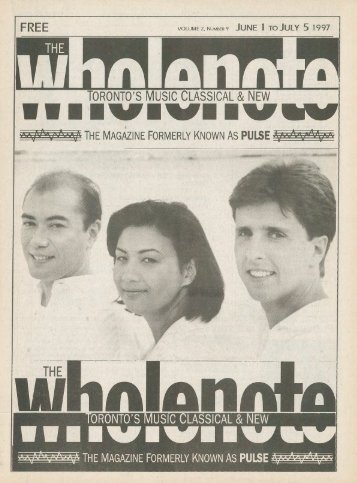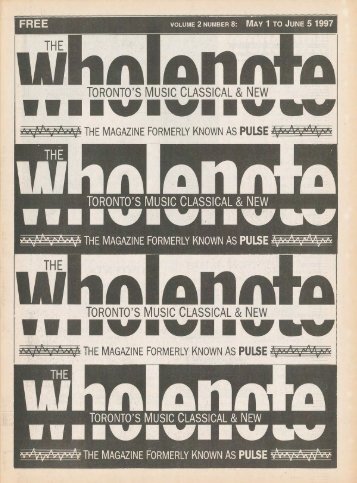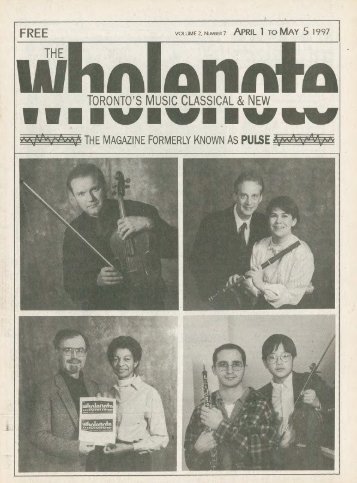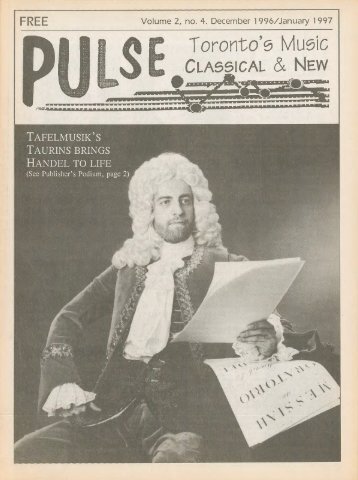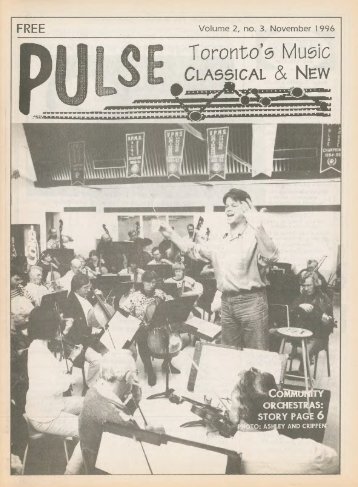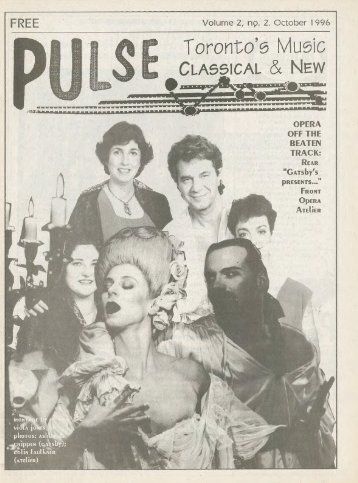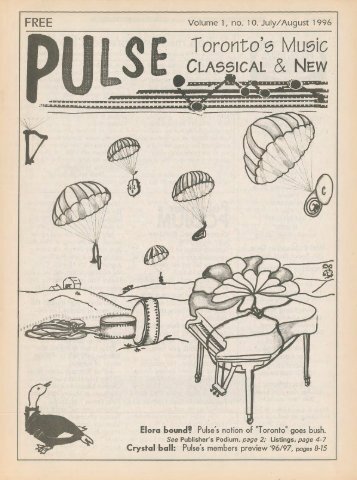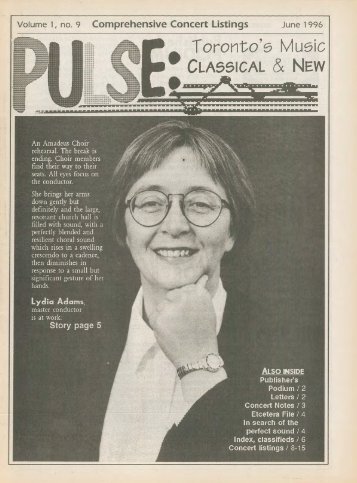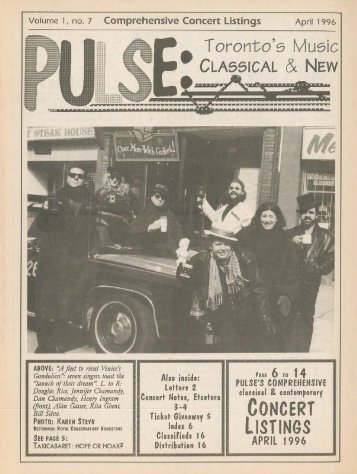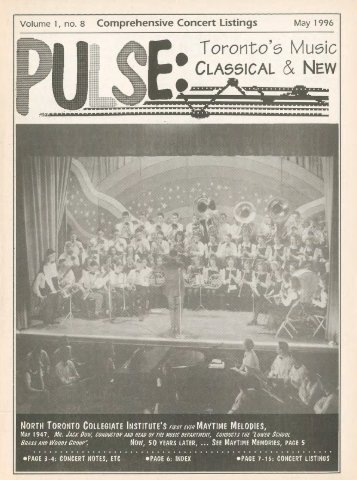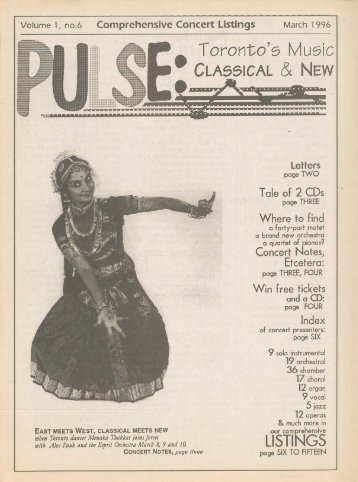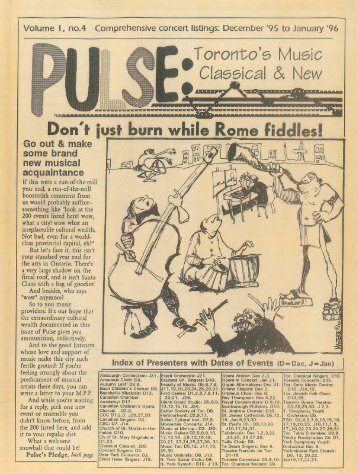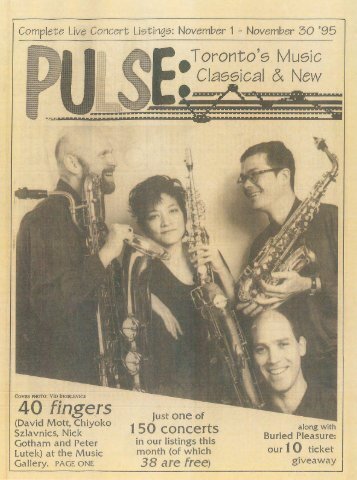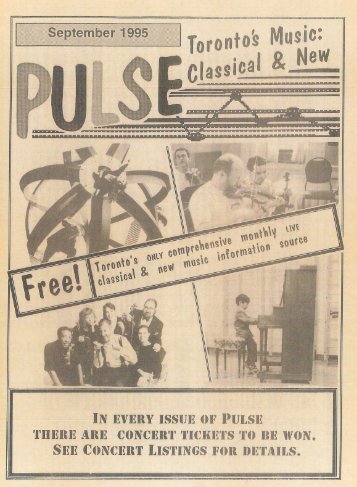Volume 17 Issue 10 - July/August 2012
- Text
- August
- Jazz
- Festival
- Toronto
- September
- Festivals
- Theatre
- Quartet
- Concerts
- Musical
Stade, layers the
Stade, layers the performance with nuancesof conviction, weakness, doubt and anger.Measha Brueggergosman delivers a powerfulperformance in the small role of Sister Rose.Finally, von Stade this time appears as themurderer’s mother, rounding off this stellarcast of mezzos and dramatic sopranos.This is so much more than just an opera of afilm — this is by now a part of American standardrepertoire.— Robert TomasEARLY & PERIOD PERFORMANCEL’Olimpiade – The OperaRomina Basso; Franziska Gottwald;Karina Gauvin; Nicholas Phan;Ruth Rosique; Nicholas Spanos; VeniceBaroque Orchestra; Markellos ChryssicosNaïve V 5295!!This recording ischeeky and timely.L’Olimpiade was yetanother Metastasiolibretto (like LaClemenza di Tito) setmany times by variouscomposers togain applause witha new version of a well-known text. The plotcentres around the prize of a king’s daughterat the Olympic games, and in this release abunch of arias were jumbled together fromthe earliest setting by Caldara in 1733 toTorchi in 1792, in time to coincide with theupcoming Olympics in London. So far, so fun!The voices range from excellent to adequate.Excellent are Karina Gauvin as Argene, RuthRosique as Aristea, Romina Basso as the athleticMegacle who competes disguised as hisfriend Licida (Franziska Gottwald). Nowadaysit’s steroids; back then evidently the latestscandal was impersonation!The problem is the definition of “pasticcio”which is what this concert is called. Thenotes are by the Oxford Professor of Music,Reinhard Strohm who translates this word as“patchwork.” The word describes a pastry orpie containing various fillings held togetherby the blending of tastes — and in opera, therecitative. As with culinary art, there can begood and bad taste. Do it badly and you getthe Met’s Enchanted Island or the earlierOpera Immaginaria.This new effort is a delightful assortment,but no decent director would have yokedtogether such a disparate selection. Evenamongst the composers selected (includingneither J.C. Bach nor Beethoven) one of themost famous arias of the period, Superba dime stessa by Lampugnani, is omitted for amediocre setting by Hasse. But since this ispleasant summer listening and the singersornament well, it gives a lot of pleasure.You could turn off the TV volume, andturn up the sound for these CDs. I’m afraidthe inevitable next step will be a staging ofL’Olimpiade with naked counter tenors, butI had better not say that too loud. “Propriety”is a word like “pasticcio” that seems to havefallen into disrepute.— Duncan ChisholmBach – Flute WorksDaniel Pailthorpe; London ConchordEnsemble; Julian MilfordChamps Hill Records CHRCD031!!Upon first seeingthis disc, one mightwell ask if we reallyneed another recordingof J.S. Bach’sflute music. Howeverupon listening toit there is much torecommend this CD,a much-cherished project of BBC Symphonyco-principal flutist Daniel Pailthorpe. Playingon a modern wooden instrument, a rarity inthe contemporary flute world, Pailthorpe’swarm and unforced sound is most pleasant,and he and his colleagues play with completeengagement. The Sonata in B Minor for fluteand obbligato keyboard is very well considered,beautifully balanced, and the teamworkbetween Pailthorpe and pianist JulianMilford is impeccable. Also on the program isthe Sonata in A Major, the outer movementsof which are performed with wit and ingenuity.In his rendition of the sonata for solo flute,Pailthorpe’s deft phrasing, wise appreciationof the underlying harmony and intimatesensibility are much appreciated.The Second Orchestral Suite ends the discand receives the same focused treatment,though this particular modern string sound isa bit of a vague throwback to the 1960s. Whilesome will still prefer to hear this repertoireplayed on baroque instruments, this is a veryfine CD carried by the players’ obvious affectionfor Bach’s music and their exemplaryplaying in the style of their choice.— Alison MelvilleCLASSICAL & BEYONDMozart – Piano Concertos 20 & 21Jan Lisiecki; Bayerischen RSO;Christian ZachariasDeutsche Grammophon 4790061!!Canadian JanLisiecki is an incredibleyoung artist whohas recorded theMozart piano concertosNos.20 and21 at the age of 16. Ienjoyed his performanceof the D Minorconcerto for its dynamic contrasts and thedramatic intensity of the cadenza. His playingis clear, structured and without pretence. Theemotions within the music were expressedhonestly and not coated in pretty or exaggeratedstylism. His technique is virtuosic witharticulate scales and arpeggios cascading upand down the keyboard in a refined tonalpalette. The interpretations are artisticallythought through and mature enough to defyhis age. His touch was lovely in a pure Mozartstyle. The second movement, Romance didnot melt my heart as some other performances(Perahia, Uchida, etc.) but he capturedthe natural flow of the music and his phrasingwas impeccable. The Rondo: Allegro Assaiwith the cadenza by Beethoven was brilliantlyplayed with crisp trills and ornaments andthe “dark energy” Lisiecki speaks of in theprogram notes is evident in the intensity ofhis playing.Conductor Christian Zacharias is mostsympathetic and supportive. A well-respectedpianist himself he responds to every nuanceof the soloist. The orchestra is brought intothe performance with spontaneous conversationalzest. I always think of Mozart’s pianoworks, solo, chamber or concerto, as operafor the keyboard. It is a singing conversationand I was pleased to read in Lisiecki’s notesthat this was what he also thought of as a keyto Mozart’s music. “With almost all the composersI play, I think of a human voice. If youplay as you speak and sing, you will producethe most natural phrasing. Mozart’s pianoconcertos sometimes have positively operaticqualities. In the third movement, Allegro vivaceassai of the C Major concerto, for example,one can imagine having different charactersspeaking with one another onstage.”In the Piano Concerto No.21 in C MajorK467, Lisiecki performs impeccably, light asair in touch, texture and mood but intenseand deep in contrasting sections. Lisieckiwrote his own cadenza which was short butwell-written and it fit into the concerto stylistically.The famous Andante was crystal clearand moved me with the singing line. Maturitywill season this movement in time. Lisieckihas found the key to successful Mozart playingand seems to channel Mozart’s exuberance,humour and singing voice.— Christina Petrowska QuilicoSchumann – Piano Concerto in A minorAngela Hewitt; Deutsches Symphonie-Orchester Berlin; Hannu LintuHyperion CDA67885Schumann – Chamber MusicNash EnsembleHyperion CDA67923Schumann – Piano Quintet; Piano QuartetAlexander Melnikov; Jerusalem QuartetHarmonia Mundi HMC 902122!!Robert Schumann once wrote: “In orderto compose, all you need to do is remembera tune that nobody else has thought of.” Ifonly it were as simple as that! Whatever mentalafflictions Schumann may have sufferedover the course of his lifetime, there is nodenying his place among the great Romanticperiod composers, and three recent discswill surely please all those who delight in64 thewholenote.com July 1 – September 7, 2012
music by the masterfrom Zwickau.When Ottawabornpianist AngelaHewitt made theworld take noticeback in 1985, it wasfor her interpretationof Bach. Since then,she has proven hertalents extend muchfurther, and thisHyperion CD featuringthe SchumannPiano ConcertoOp.54 plus two lesser-knownworks forpiano and orchestrawith the DeutschesSymphonie-Orchester Berlinunder the directionof Finnish conductorHannu Lintuis a case in point.The concerto wascompleted in 1845as a gift for Schumann’s wife, concert pianistClara. It proved to be an instant success,with one critic noting the “beautiful alliance”between orchestra and soloist. Here,Hewitt and the DSOB comprise a formidablepartnership, her technical brilliance pairingsplendidly with the warmth of the orchestra’sstrings and woodwinds. The inclusion of theIntroduction and Allegro appassionato Op.92and the Introduction and Concert-AllegroOp.134 are added bonuses, rounding out thismost satisfying recording.I’ve long been a huge fan of the LondonbasedNash Ensemble. As resident chamberensemble of Wigmore Hall, it has rightfullyearned a reputation for musical excellence,and this latest offering (also on Hyperion) featuringSchumann’s smaller chamber music,is no exception. All the music here was composedbetween 1849 and 1853, and includesthe Märchenbilder Op.113 for viola and piano,the Märchenerzählungen Op.132 for clarinet,viola and piano and the Violin Sonata No.1Op.105. The playing is elegant and intelligent,whether it be the elegiac opening to theAdagio and Allegro Op.70 for horn and pianoor the cheerful optimism of the finale fromthe clarinet and piano Fantasiestücke Op.73.Schumann had scarcely written any chambermusic before 1842, but before that yearwas out, he had produced three string quartets,a piano quartet and a piano quintet. Boththe piano quartet and quintet are presentedon a recent Harmonia Mundi recording featuringthe Jerusalem Quartet with pianistAlexander Melnikov. Now a major playeramongst chamber ensembles, the Jerusalemrecently won its third BBC Music Magazineaward and together with Melnikov, has producedan exemplary recording. The playing isconfident and exuberant without being bombastic(as is often the case in other recordingsof these pieces), with Melnikov displaying aparticular sensitivity to the demands of thescore. Do I foresee another award for this ensemblein the near future? With this level ofquality, it wouldn’t be surprising.In all, these are three fine additions to thecatalogue — great music, superbly performed.We can hardly ask for more.— Richard HaskellLiszt – The ConcertosDaniel Barenboim; Staatskapelle Berlin;Pierre BoulezDeutsche Grammophon 477 9521!!This live performanceof the Lisztpiano concertos isan interesting listeningexperience. Thefirst revelation forme is Boulez conductingmusic thathe had once thoughtof as empty, virtuosic fluff. The second isBarenboim’s deep, dark, dramatic, yet poeticinterpretation. He brings an operatic anddevilish Faustian edge to the music.Boulez is known as one of the 20th centurygiants in contemporary music as both composerand conductor. Barenboim is acclaimedfor his fine Beethoven and Mozart playing.Together the two masters have created a paletteof astounding orchestral and pianisticcolors emulating a wide range of conflictingemotions. These performances are not simplya showcase for virtuoso technique. I admirethe control and attention to the structure ofthe music. Every detail is carefully nuancedand articulated in both piano and orchestra.We have to remember that Franz Liszt wasnot only a great pianist, a rock star in his timewho had an immense technique and repertoire,but also a successful conductor and aprolific composer.Alan Walker in his biographies of Liszt hascalled his piano piece Nuage Gris the gatewayto modern music. Liszt pushed chromaticismto the limit in his orchestral tone poems andused the piano pedals to create exotic soundscapes.He was the new music composer ofhis time. In this performance I found myselflistening to the orchestra as much as thepiano. Boulez has always been known for hiskeen ears and his remarkable ability to clarifycomplex orchestral sounds. He doesn’t disappointhere. I heard lines and details in theorchestra that sounded very fresh and convincing.Barenboim plays the piano with anedge that is aggressive at times but so focusedand intense that it became hypnotic. He alsoarticulates the melodic line with passion buttenderness as well.These are very personal and unique interpretationsand maybe not for everyone. Thetone of the piano is sometimes too harsh andthe tempos are slower than in other performances.The ensemble in the first movementcould be tighter. However, I find these performancesmasterful and exciting, brimmingwith new ideas and swirling emotions. Theencores, Consolation No.3 and Valse oubliéeNo.1 are a real bonus, exquisitely performedwith a deep sensitivity that will meltyour heart.— Christina Petrowska QuilicoMahler – Symphony No.1SWR Sinfonieorchester Baden-Baden andFreiburg; Francois-Xavier RothHänssler Classic CD 93.294Mahler – Symphony No.7Bamberger Symphoniker; Jonathan NottTudor 7176Mahler – Symphony No.3Michaela Schuster; Gurzenich-OrchesterKoln; Markus StenzOehms Classics OC 648! ! Though the doubleanniversaries ofGustav Mahler’sbirth (1860) anddeath (1911) havenow drawn to aclose the hits keepon coming. A newHänssler disc ofthe First Symphonycommemorates theinaugural concert ofFrench conductorFrançois-XavierRoth, recently appointedchiefconductor of theBaden-Baden basedradio orchestra,a highly accomplishedensemblewell known for itsexpertise in contemporarymusic. Roth’sapproach to Mahleris typically rigorousand hard-driven,a strategy well suited to the bucolic Scherzoand sure-fire finale but one which gives shortshrift to the emotive plasticity and elegantphraseology a true Mahlerian such as the lateRafael Kubelik brought to the other movements.The album includes a bonus performanceof a rarely-heard early work by AntonWebern, In Sommerwind (1904), notable forits surprising French influences and sprawlingepisodic structure.Sad to say, there is some question as towhether this radio orchestra will survivemuch longer in light of austerity measuresrecently proposed by the state broadcastingauthority. Petitions are flying to ensureits continuation and contemporary Germancomposers are in a panic. Let us hope theyhave more of an impact than we observedhere in Canada some years ago.Though we have not received their discs atThe WholeNote, I feel compelled to mentionthe ongoing Mahler cycle by another financiallychallenged orchestra, the PittsburghJuly 1 – September 7, 2012thewholenote.com 65
- Page 1:
Vol 17 No 10Great Music OutdoorsThe
- Page 5 and 6:
Volume 17 No 10 | July 1 - Septembe
- Page 7 and 8:
WONDERING WHEN THE AUGUST ISSUE OFT
- Page 9 and 10:
to be surprised. If you give them s
- Page 11 and 12:
ROSS BURNS, GYPSOPHILIAGypsy jazz,
- Page 13 and 14: JORIS VAN DAELEclude several recita
- Page 15 and 16: cracks of this column. Intersection
- Page 17 and 18: July 1 - September 7, 2012thewholen
- Page 19 and 20: Moshe Hammer in rehearsalwith stude
- Page 21 and 22: Beat by Beat | Choral SceneIn Tune
- Page 23 and 24: performed by organists Andrew Adair
- Page 25 and 26: WAYNE EARDLEYBeat by Beat | Music T
- Page 27 and 28: Beat by Beat | World ViewFiery Wate
- Page 29 and 30: those numbers, with over 500 perfor
- Page 31 and 32: Also July 6, 7, 9-12, 15; start tim
- Page 33 and 34: Percussion. Original compositions b
- Page 35 and 36: Night Spectacle. 235 Queen’s Quay
- Page 37 and 38: Brott Music Festival; Music and Bey
- Page 39 and 40: Admission is per day; children 1
- Page 41 and 42: Quartet. Tchaikovsky: Quartettsatz;
- Page 43 and 44: Music inspired by Shakespeare and t
- Page 45 and 46: • July 6 8:00: Sinfonia Toronto.
- Page 47 and 48: music. Gryphon Trio; Phil Dwyer, sa
- Page 49 and 50: CC - City Centre, 47 Downie StreetC
- Page 51 and 52: Winds Op.16. Ross Edwards, clarinet
- Page 53 and 54: 379 Spadina Ave. 416-977-1210www.gr
- Page 55 and 56: Conversations with Keith. Keith Hor
- Page 57 and 58: The SOCAN Foundation helps musicgro
- Page 59 and 60: Classified Advertising | classad@th
- Page 61 and 62: Freedom and the Arts: Essays on Mus
- Page 63: years, although there is very littl
- Page 67 and 68: MODERN & CONTEMPORARYPremieres: Mus
- Page 69: The shortlist of Canadian-bornmusic
- Page 72: André Laplante,Opening Night: July
Inappropriate
Loading...
Mail this publication
Loading...
Embed
Loading...

